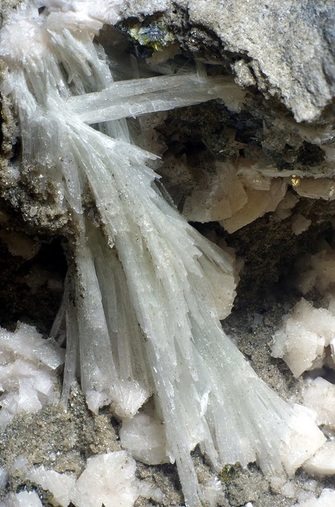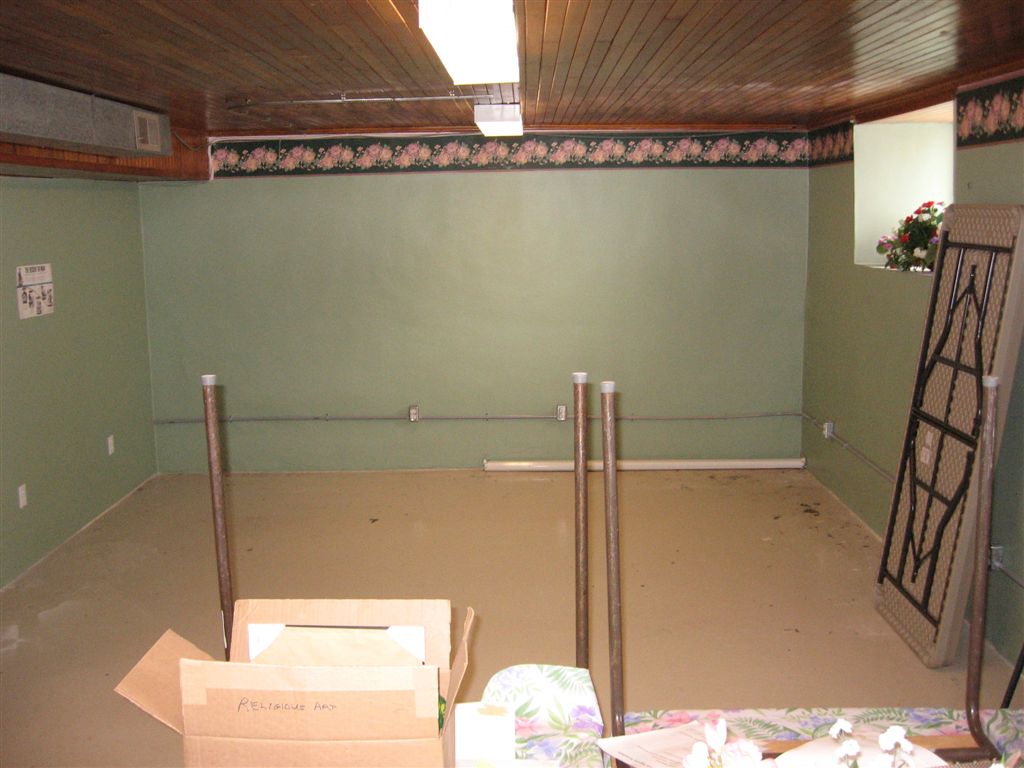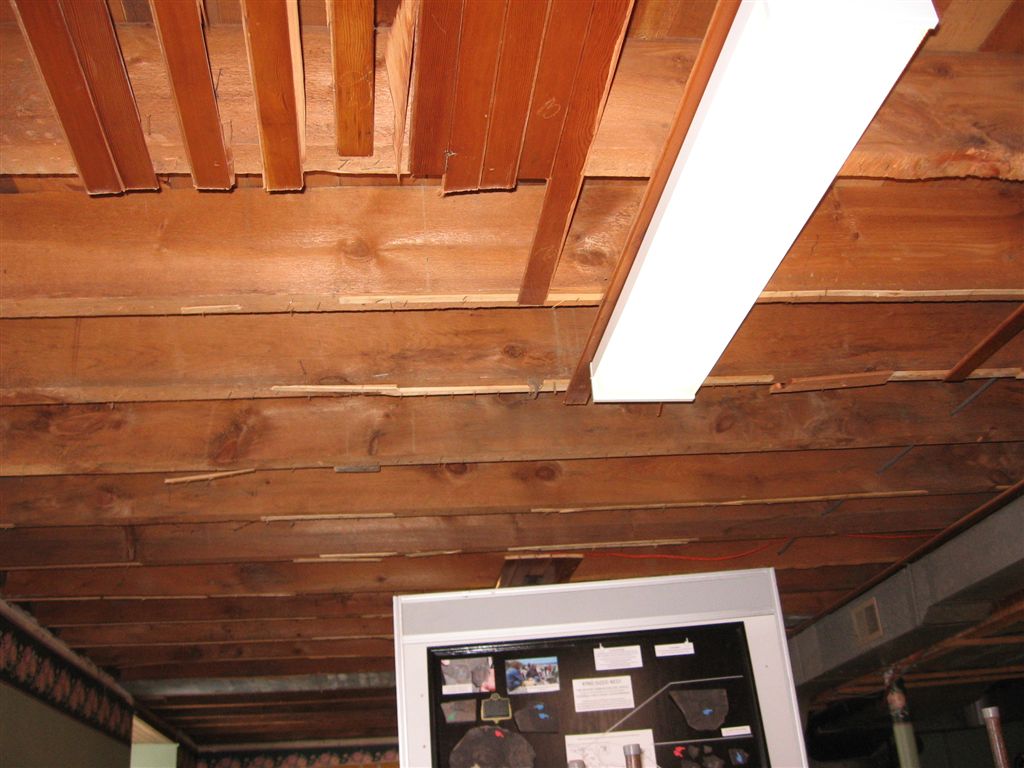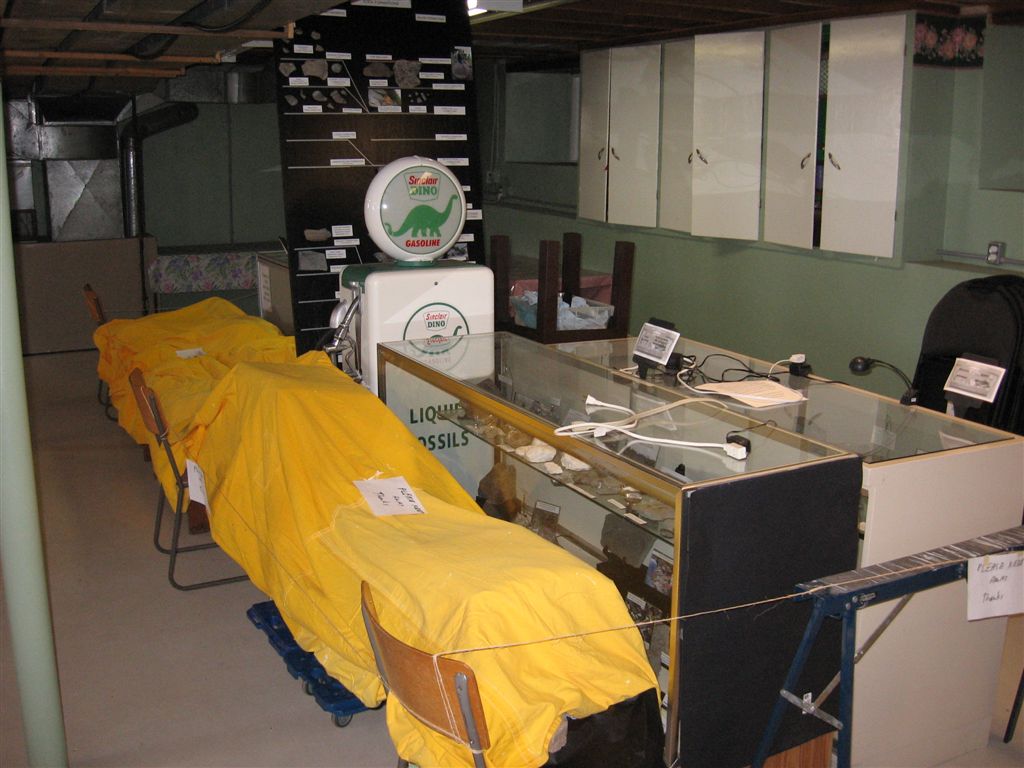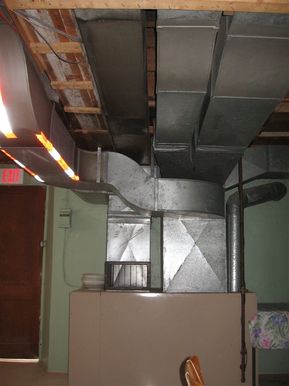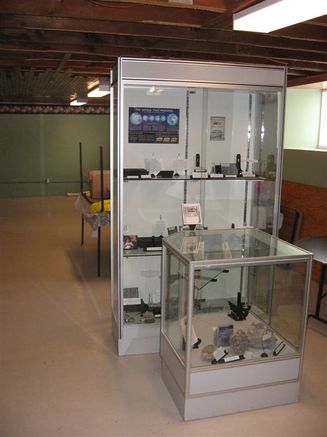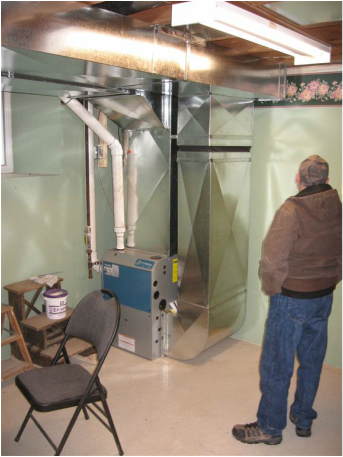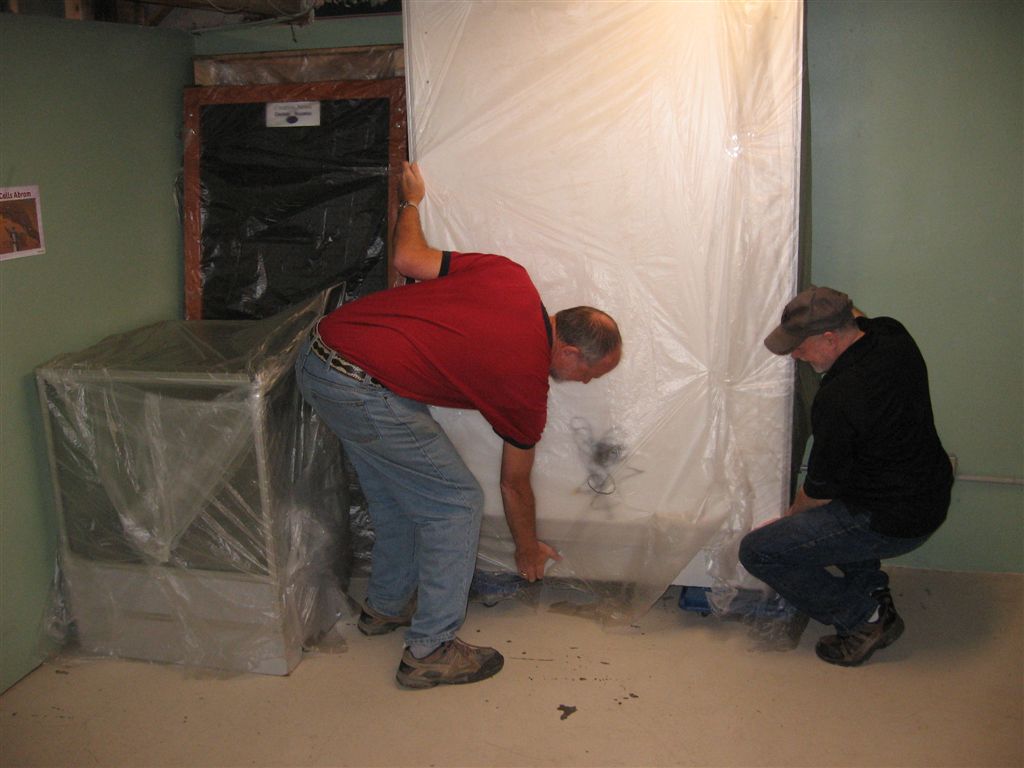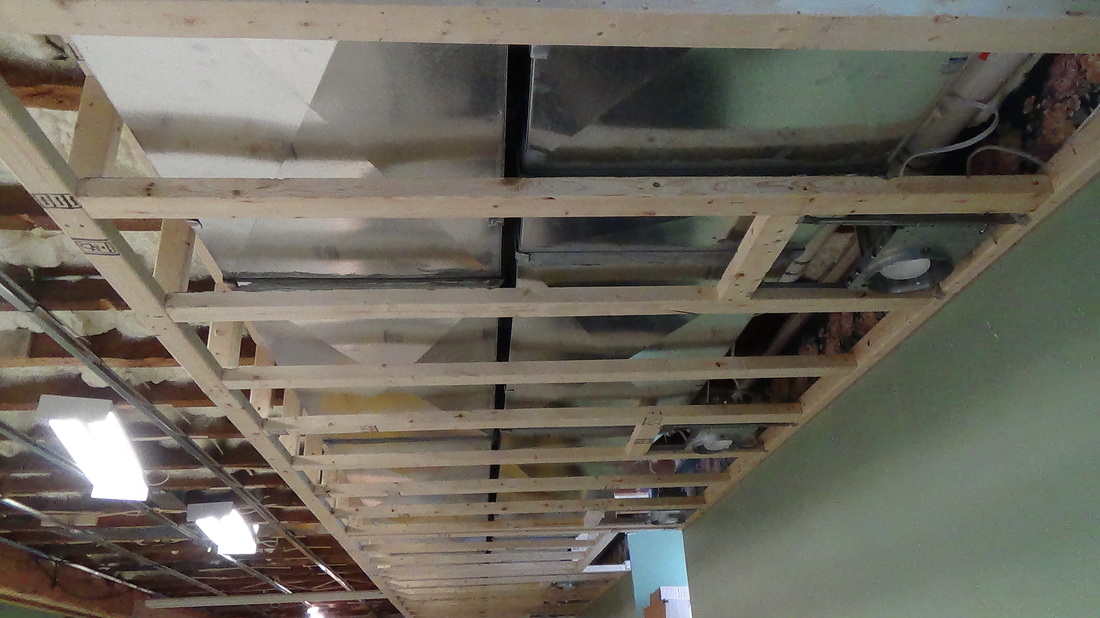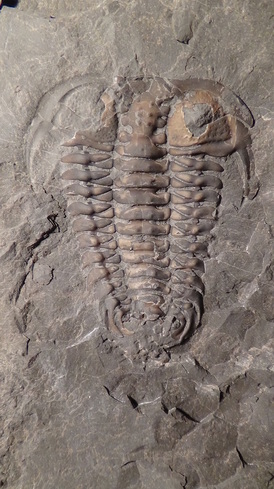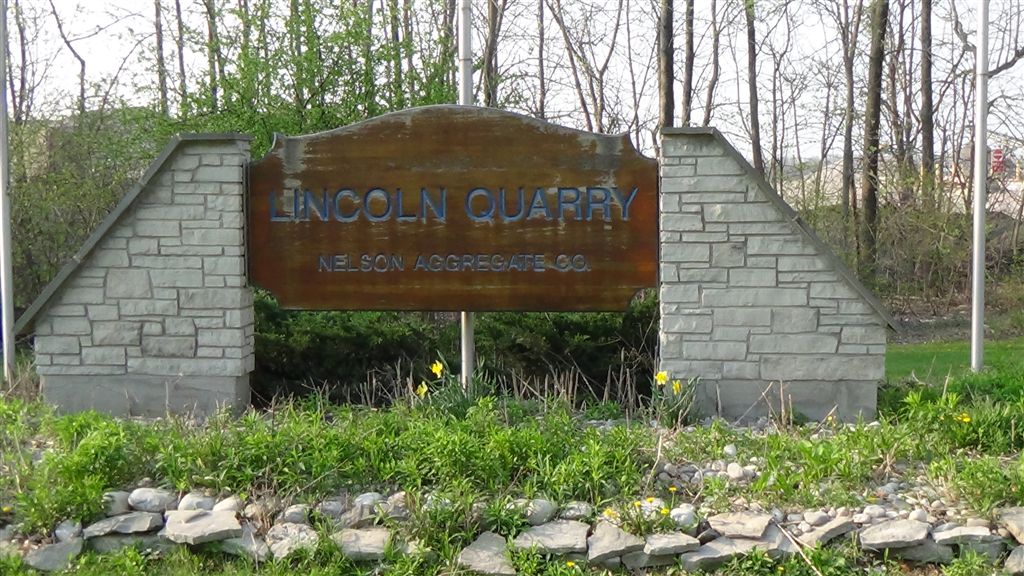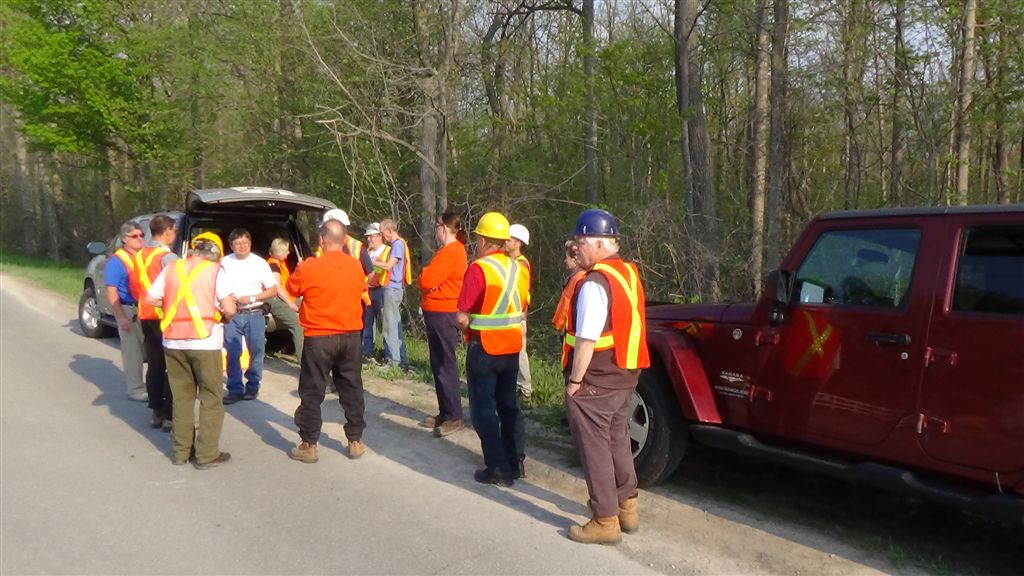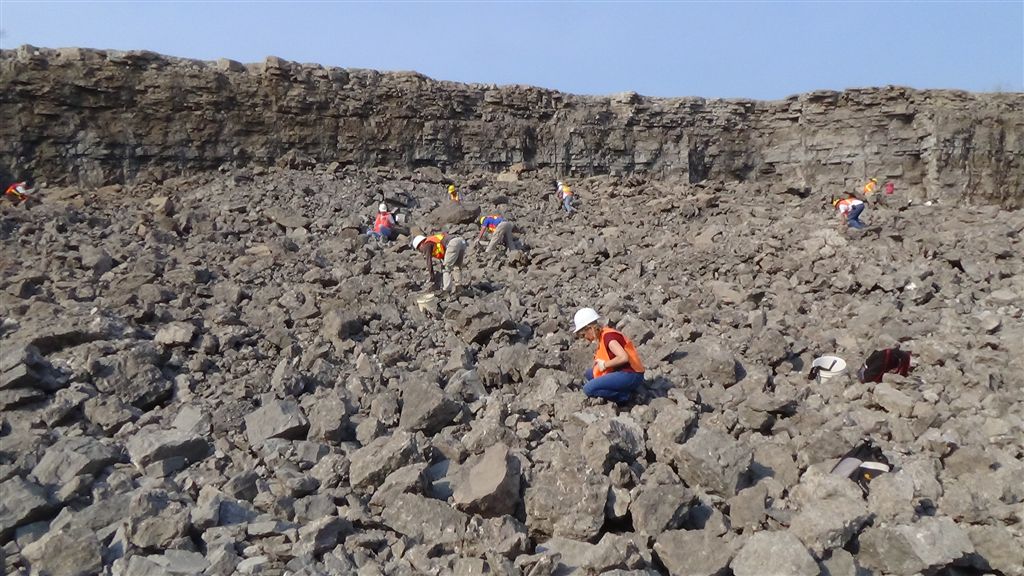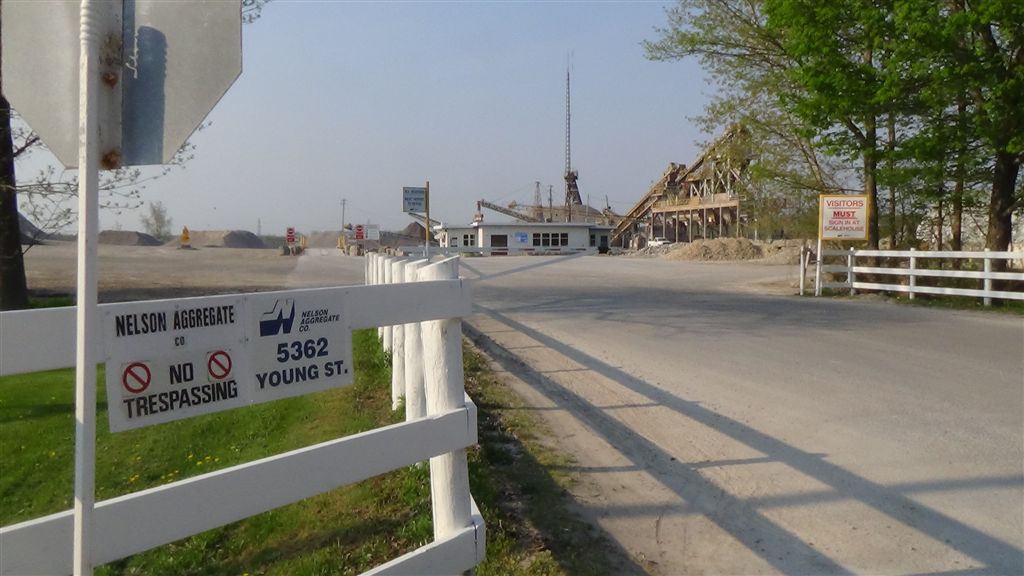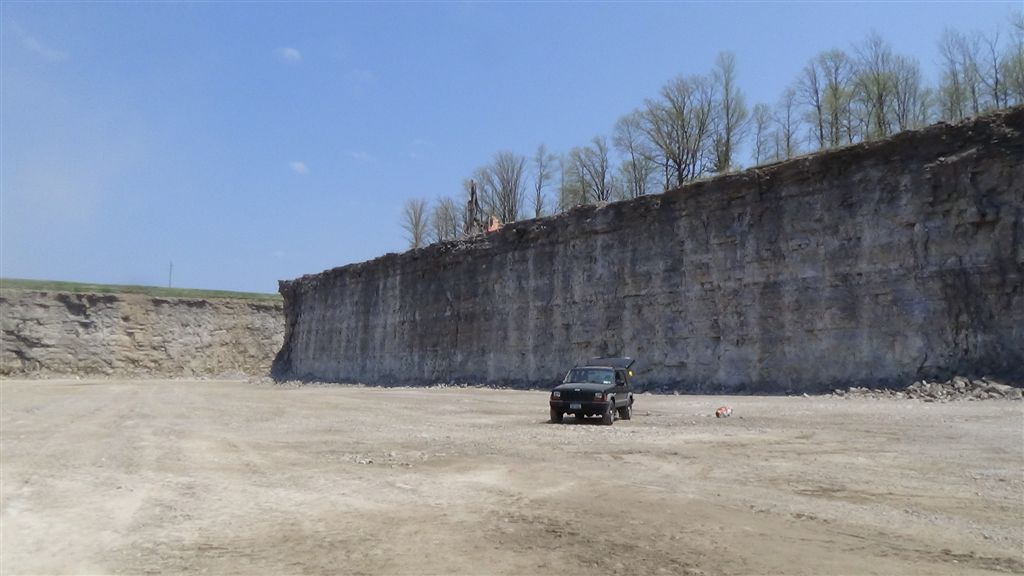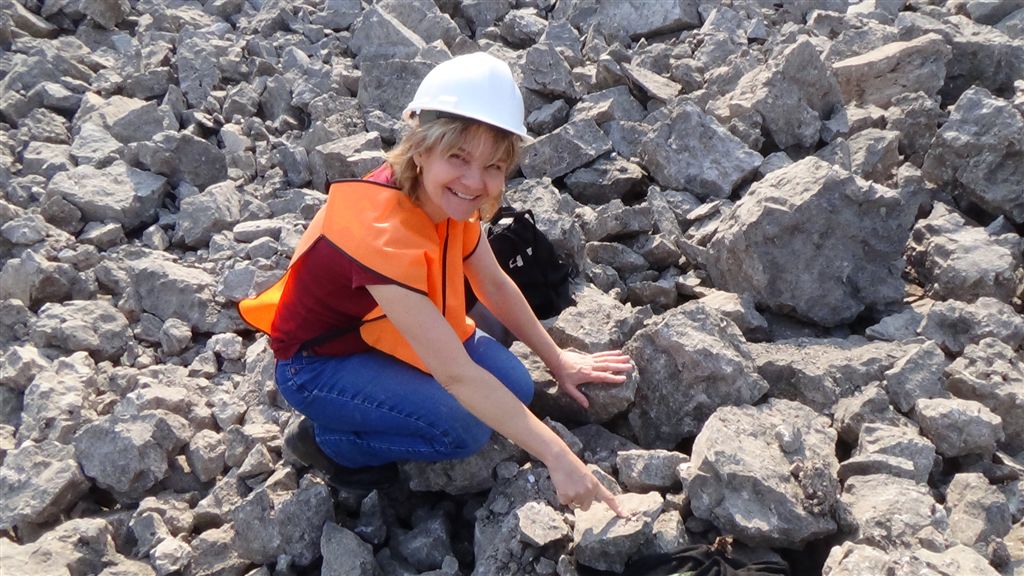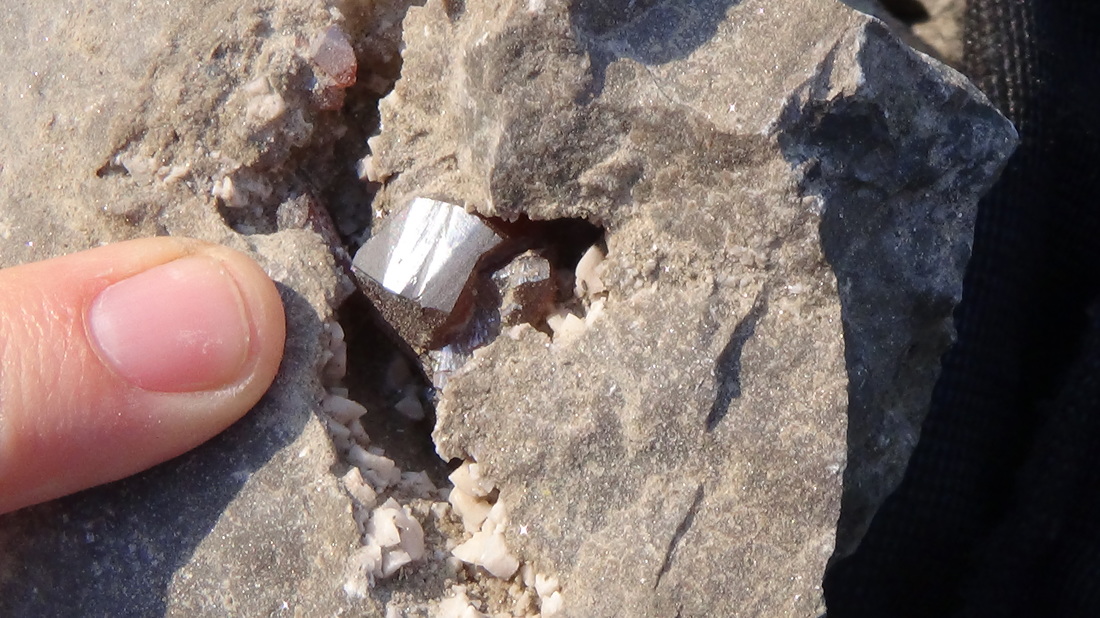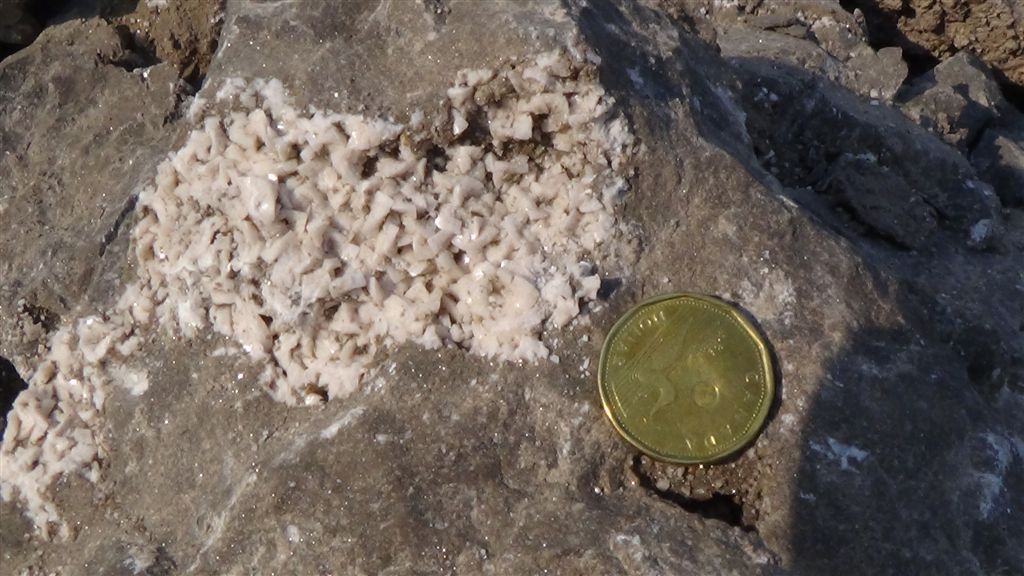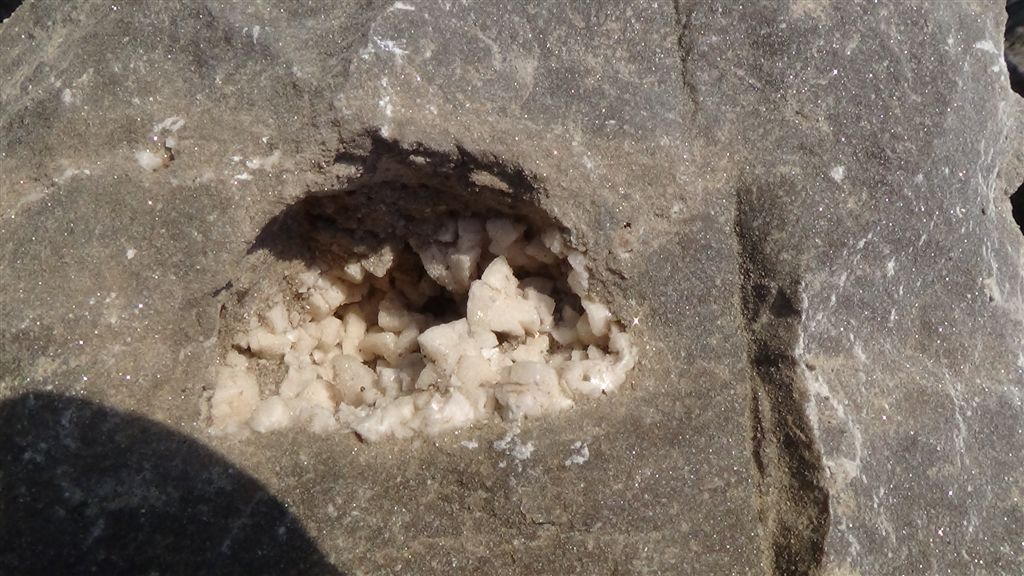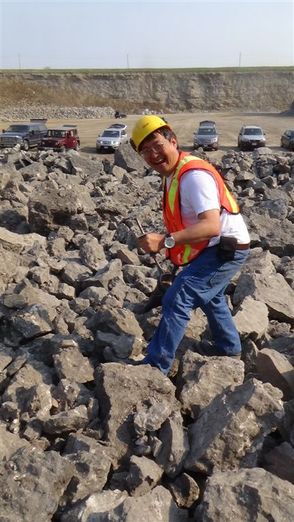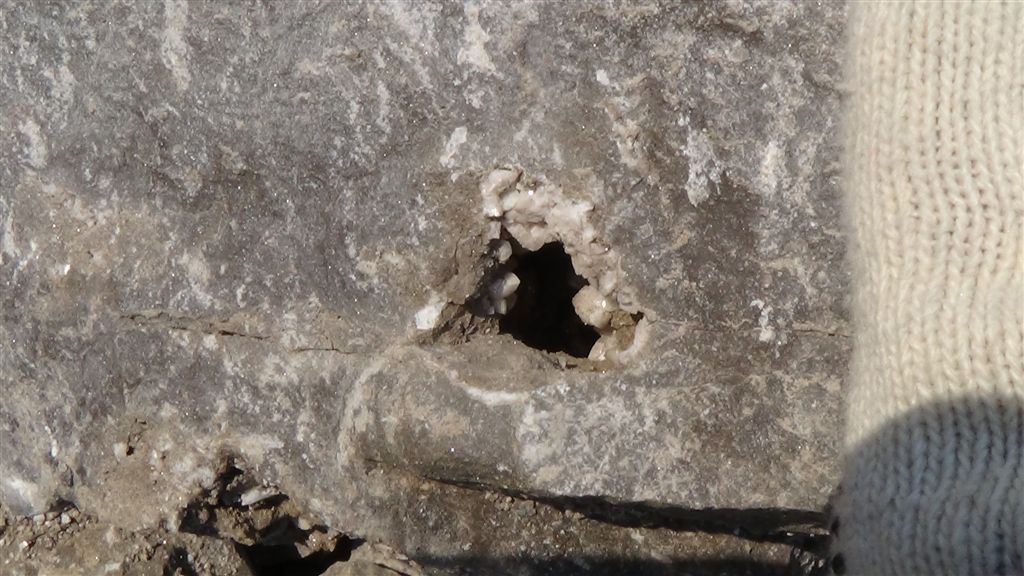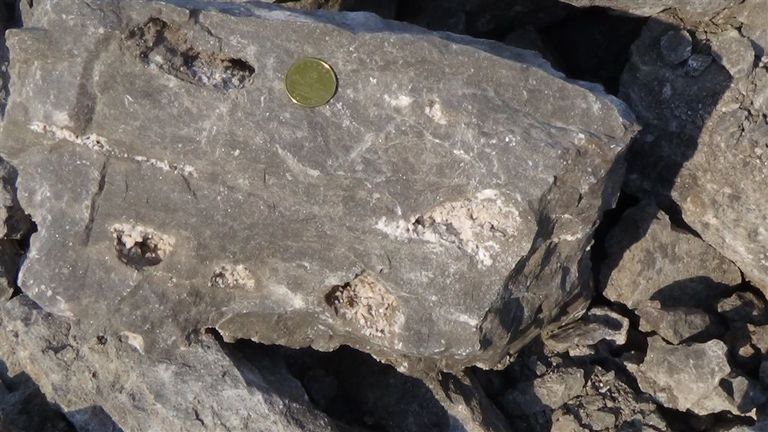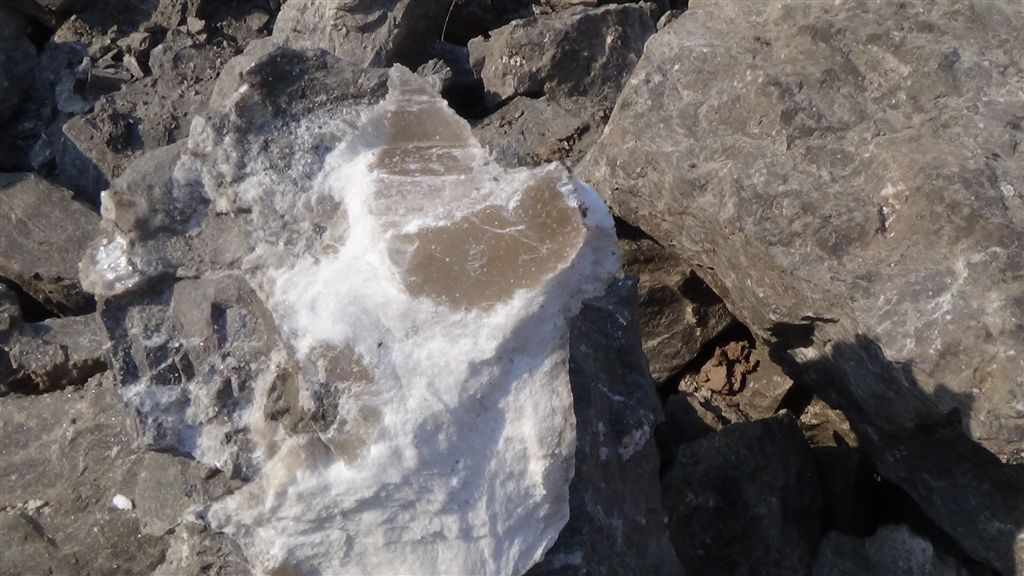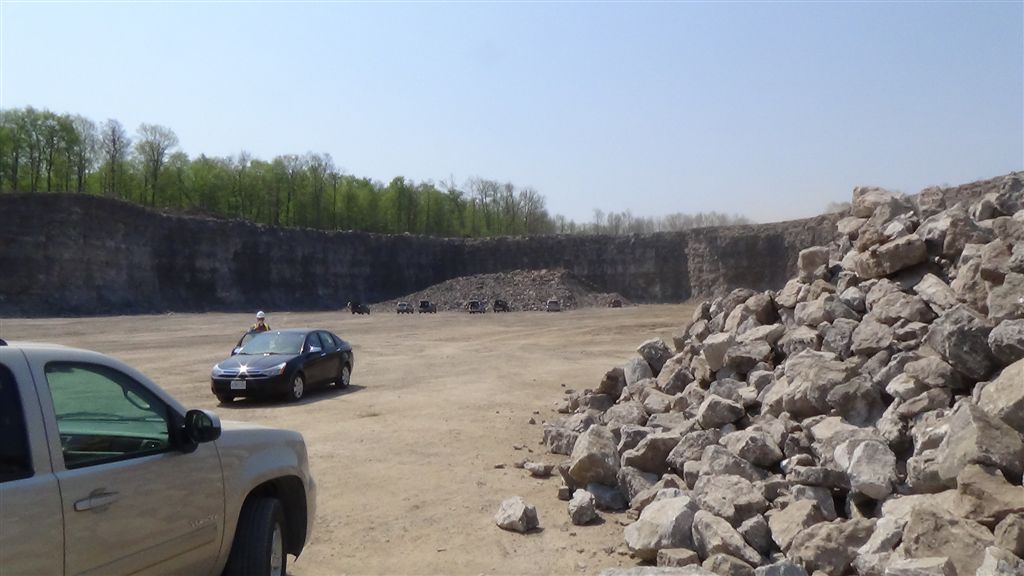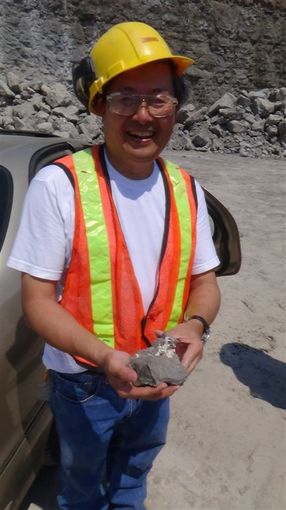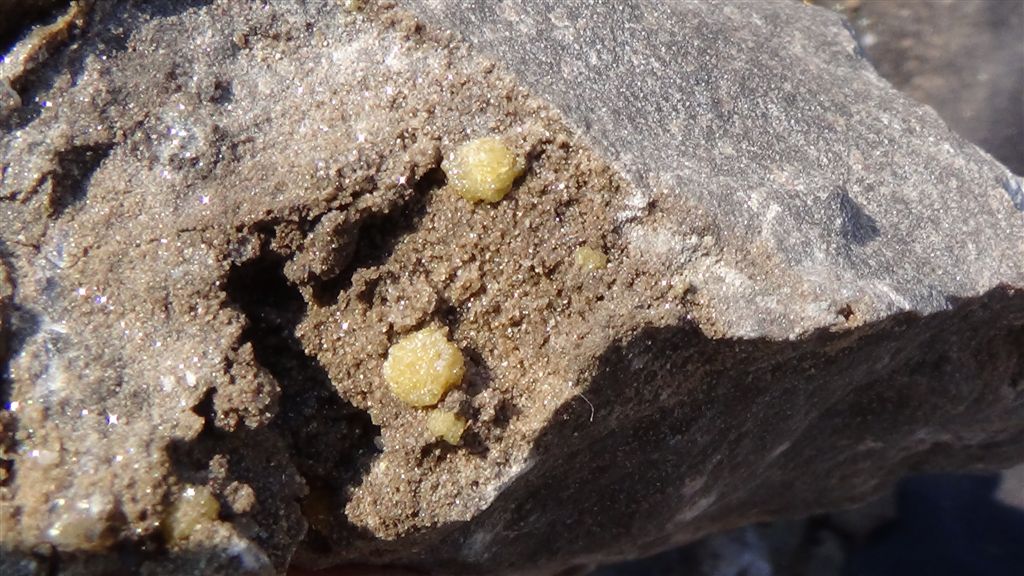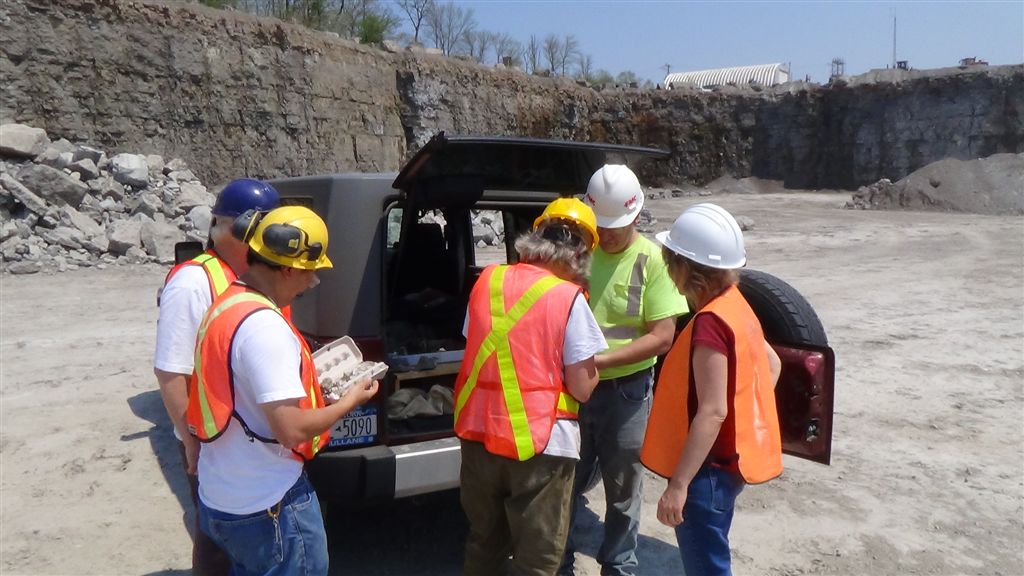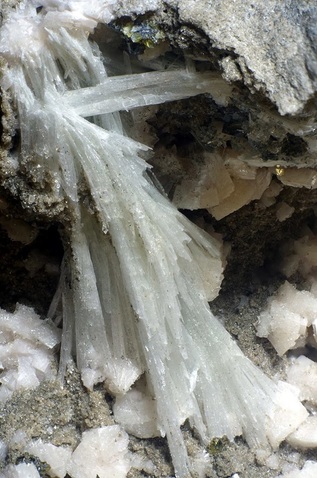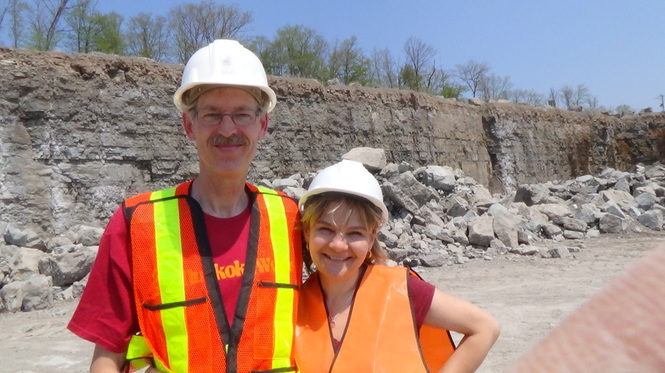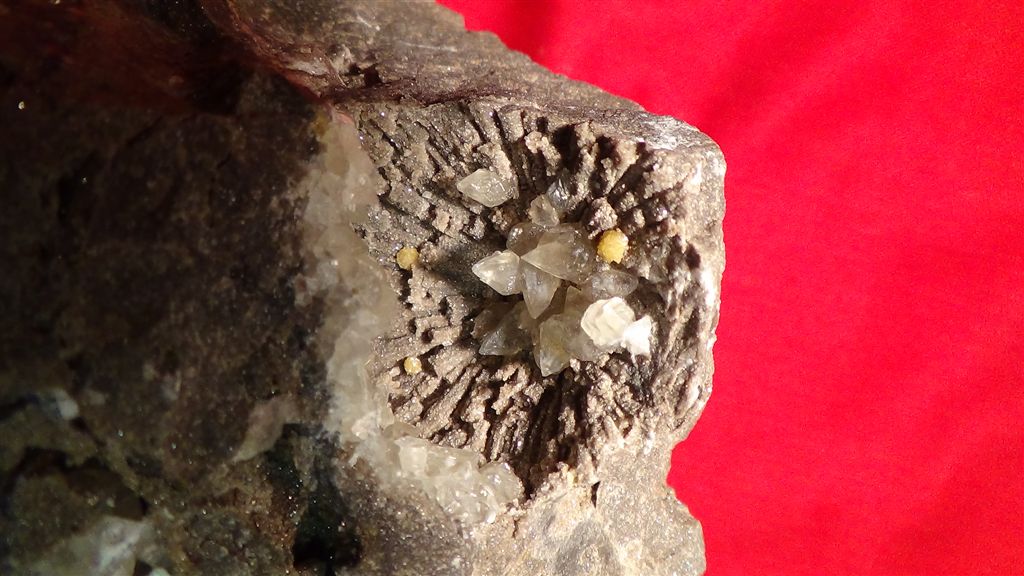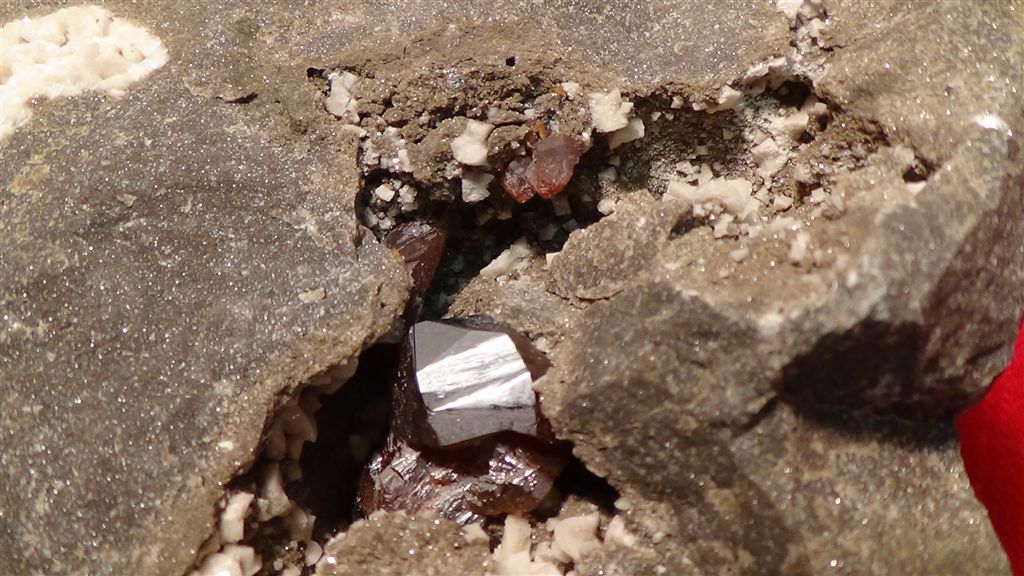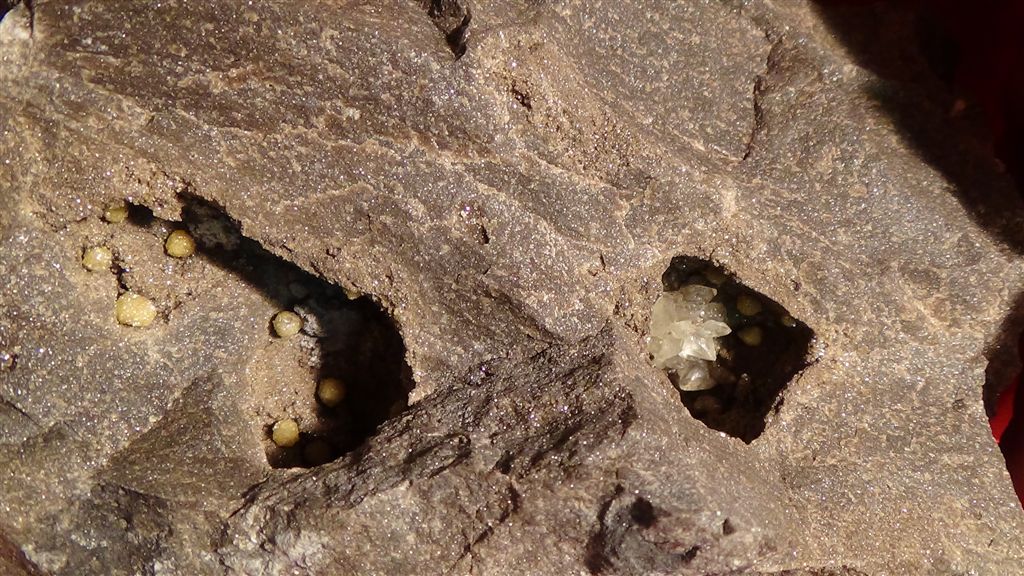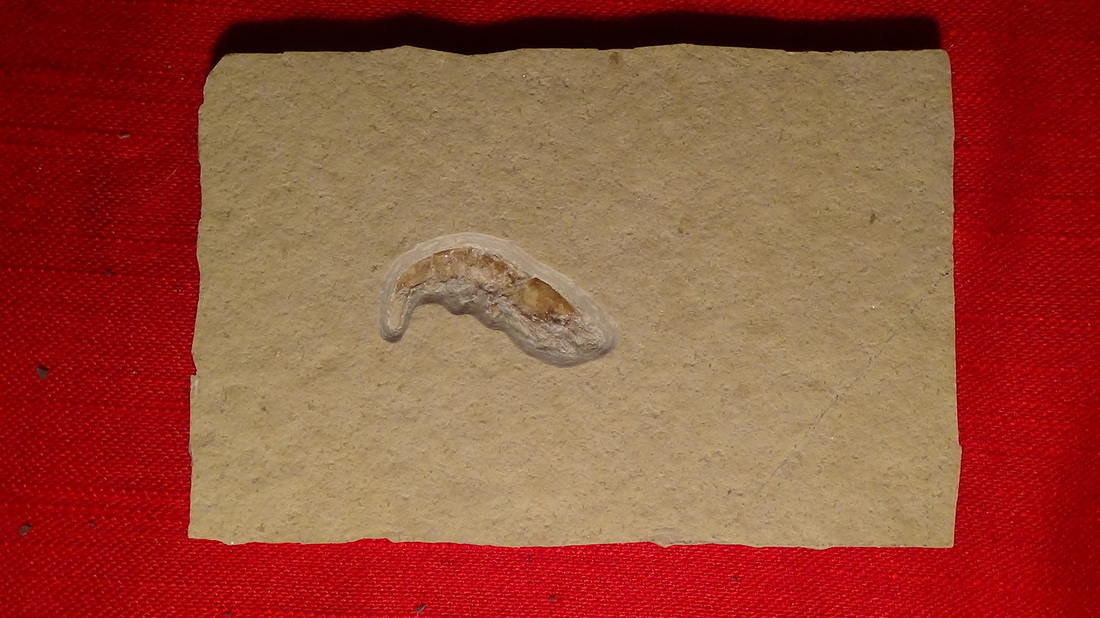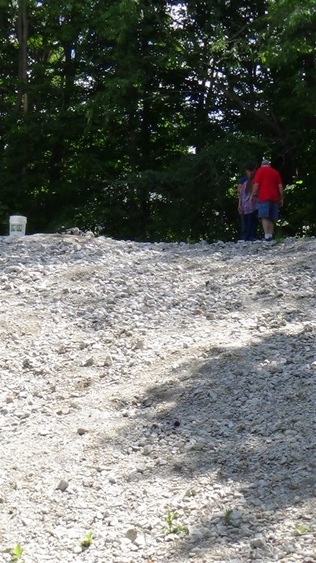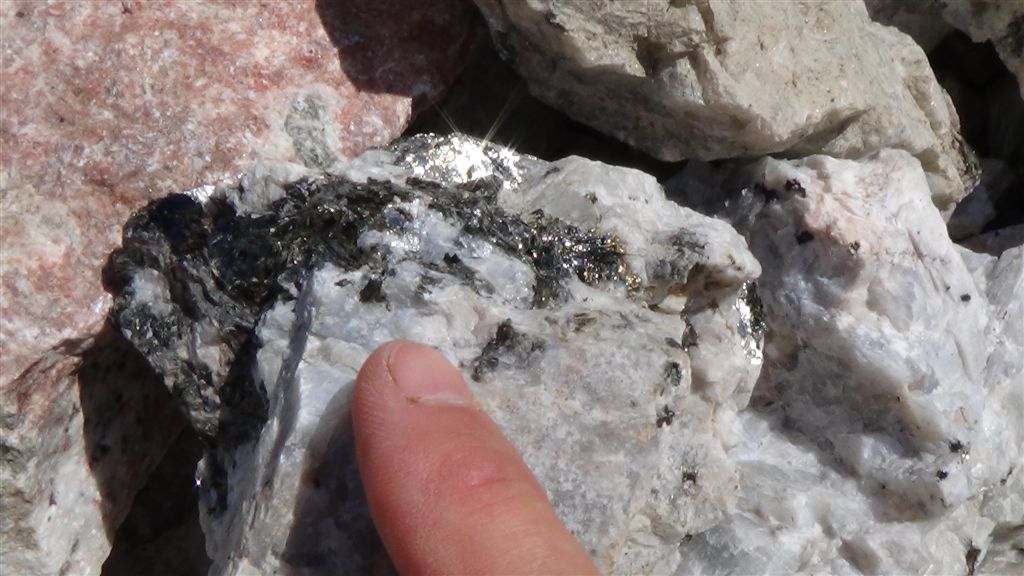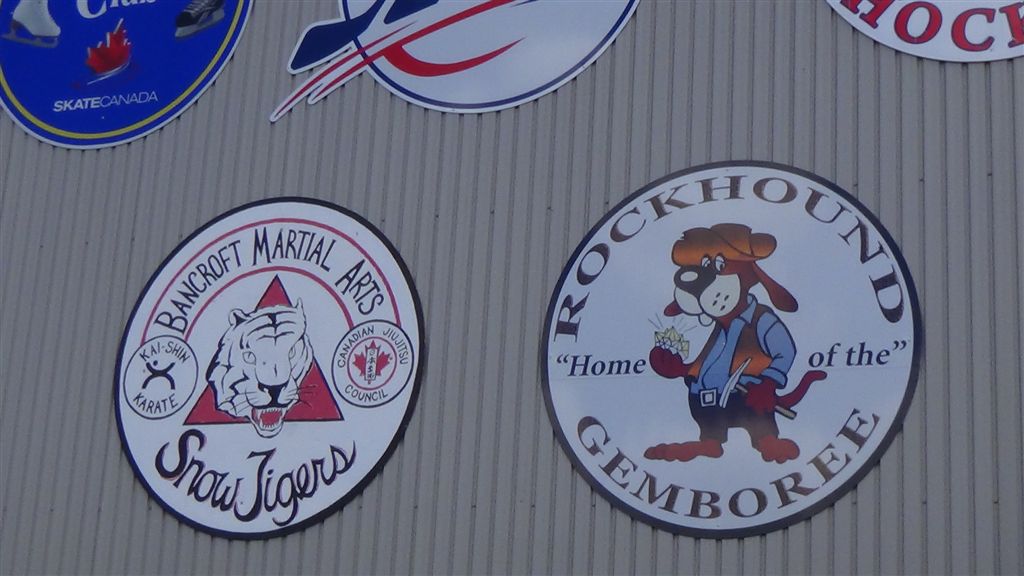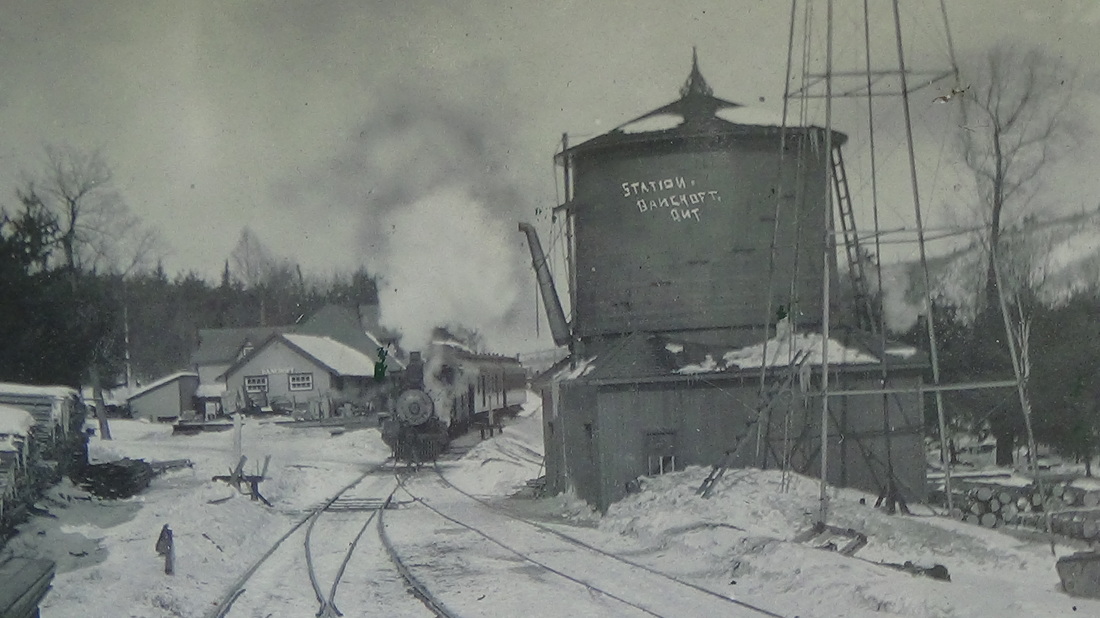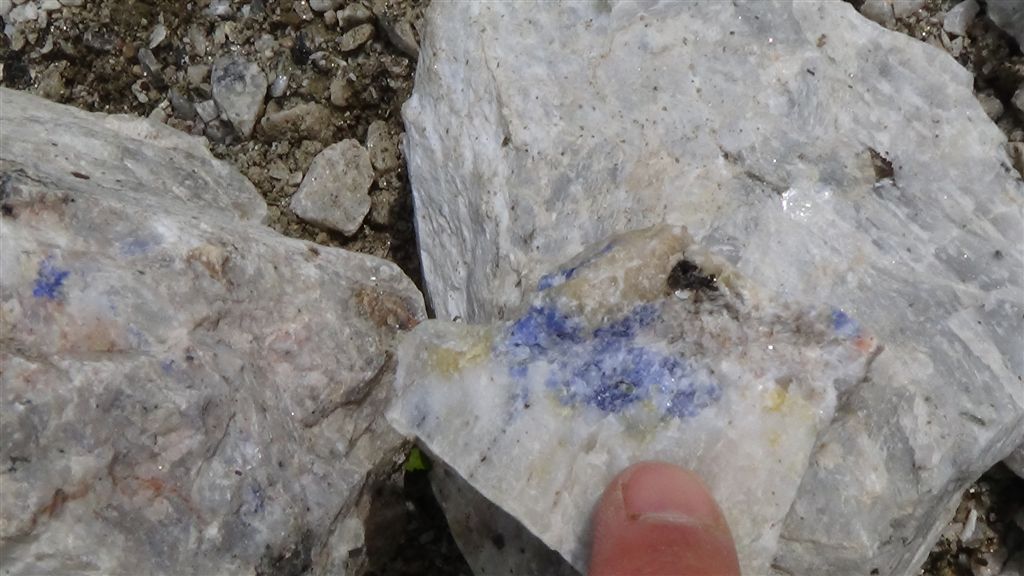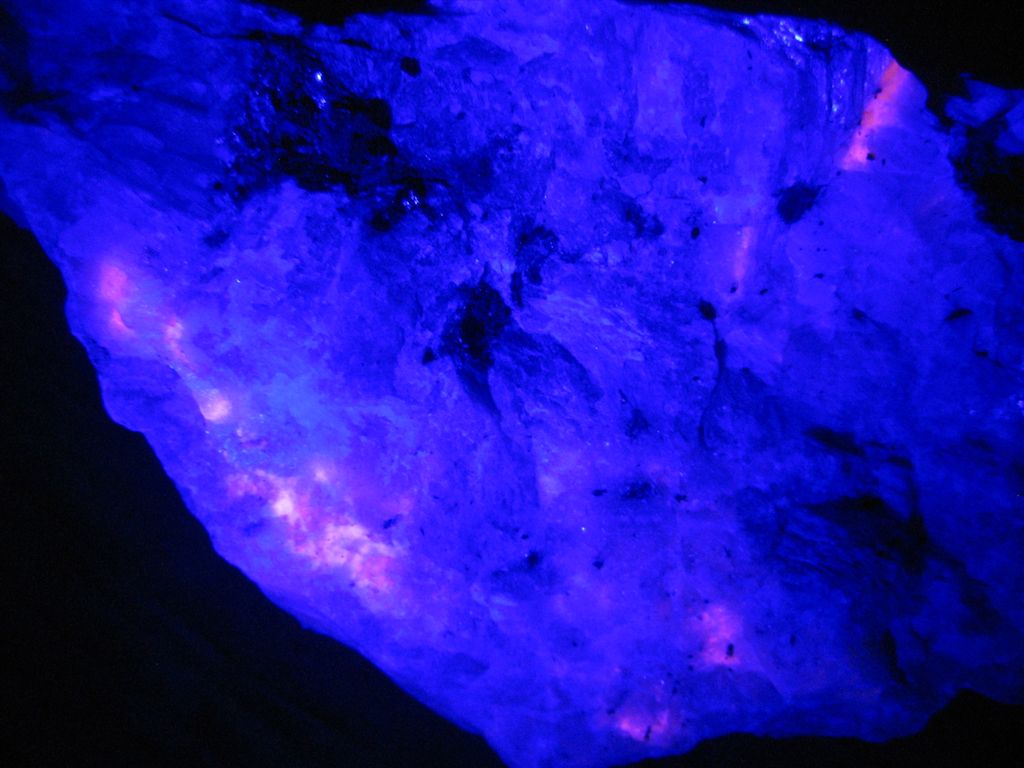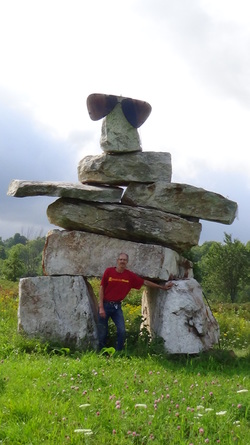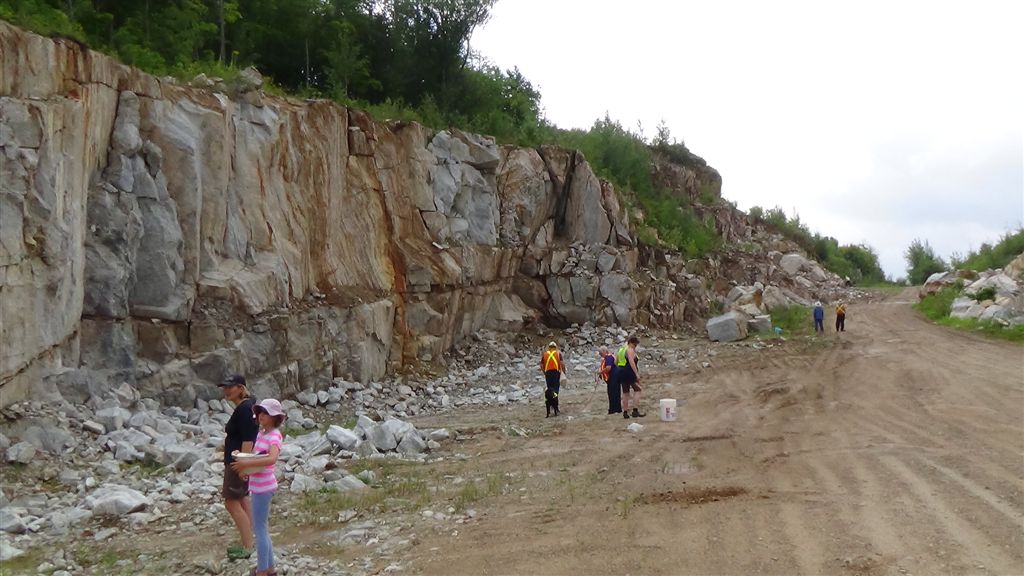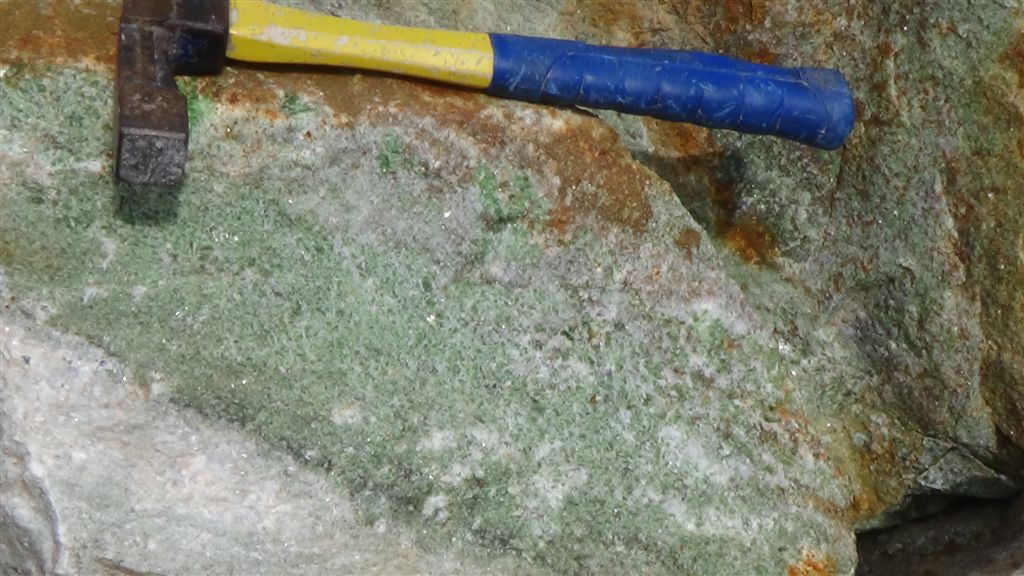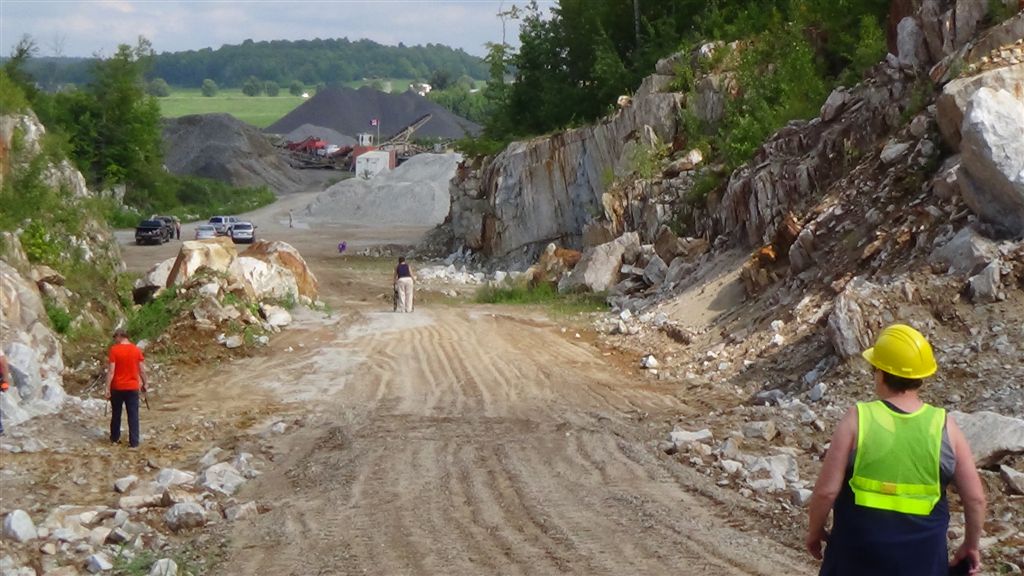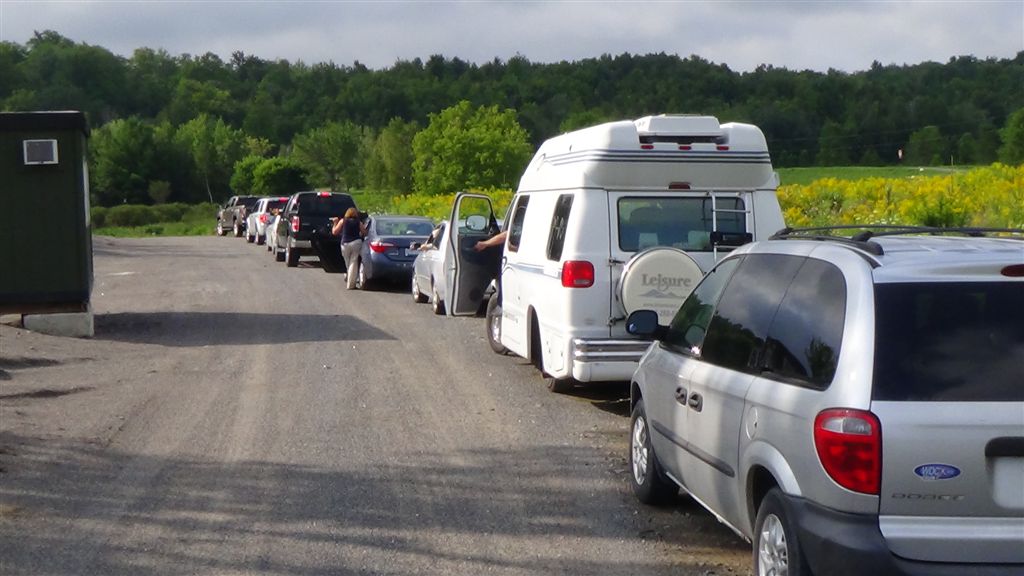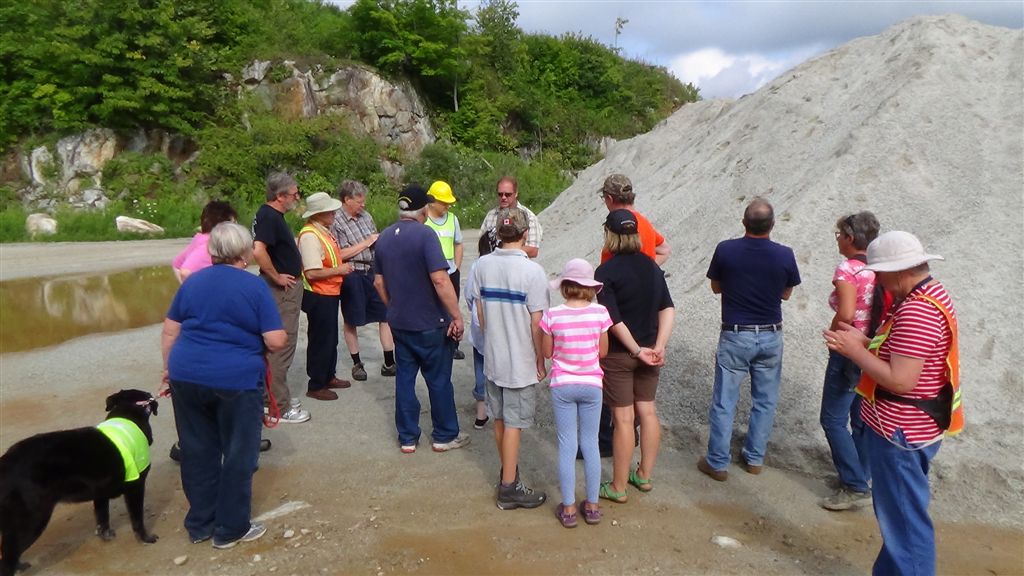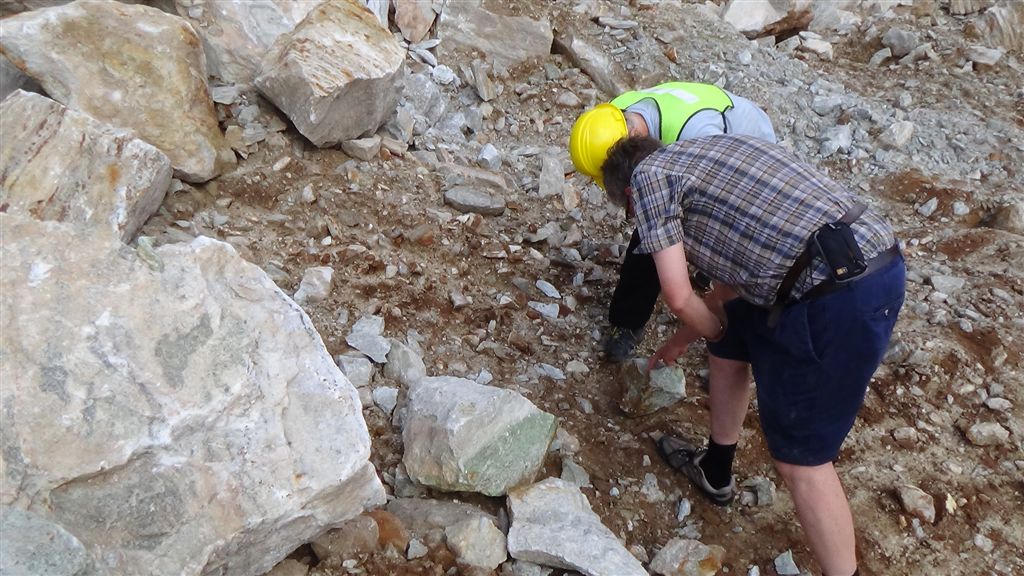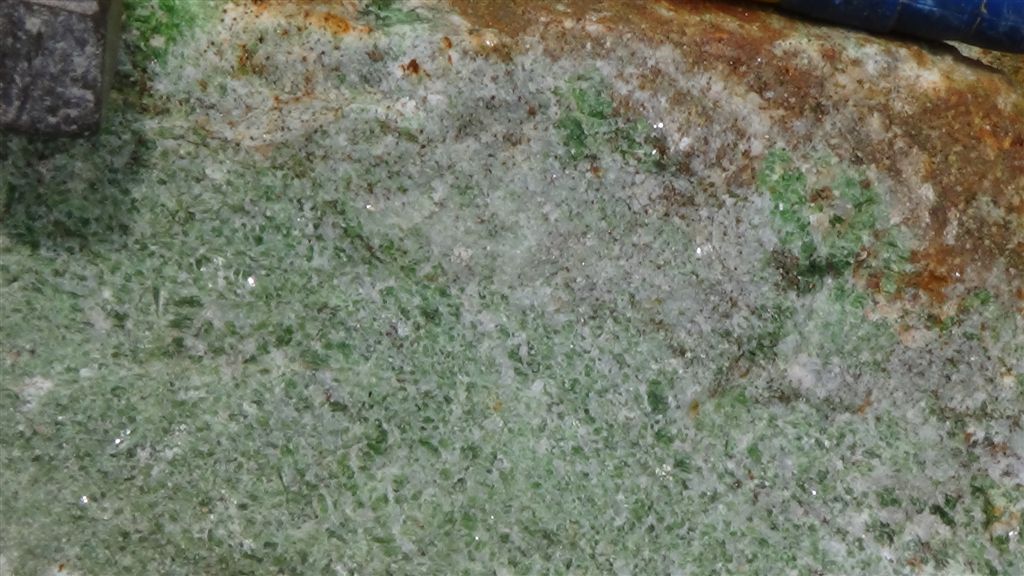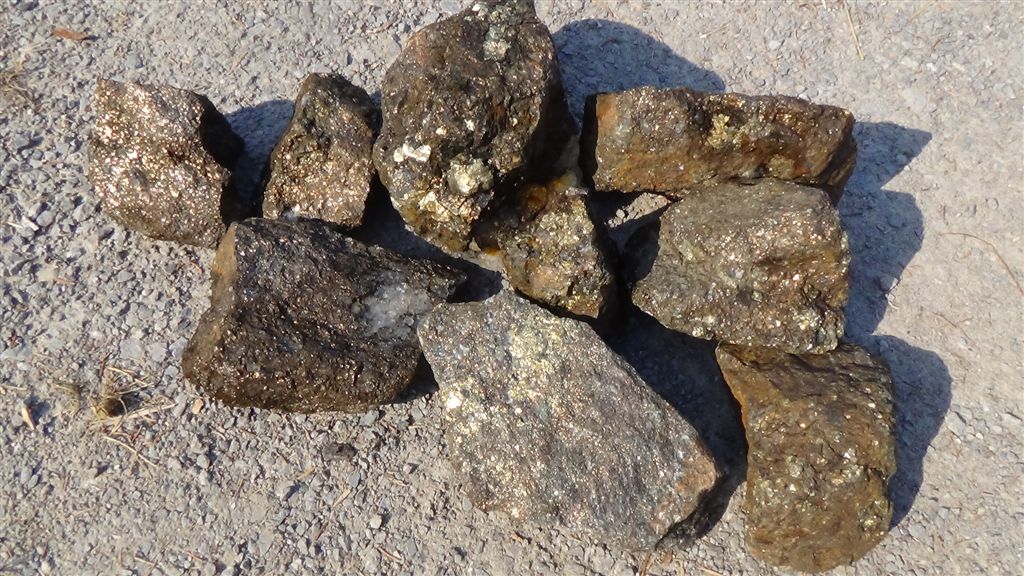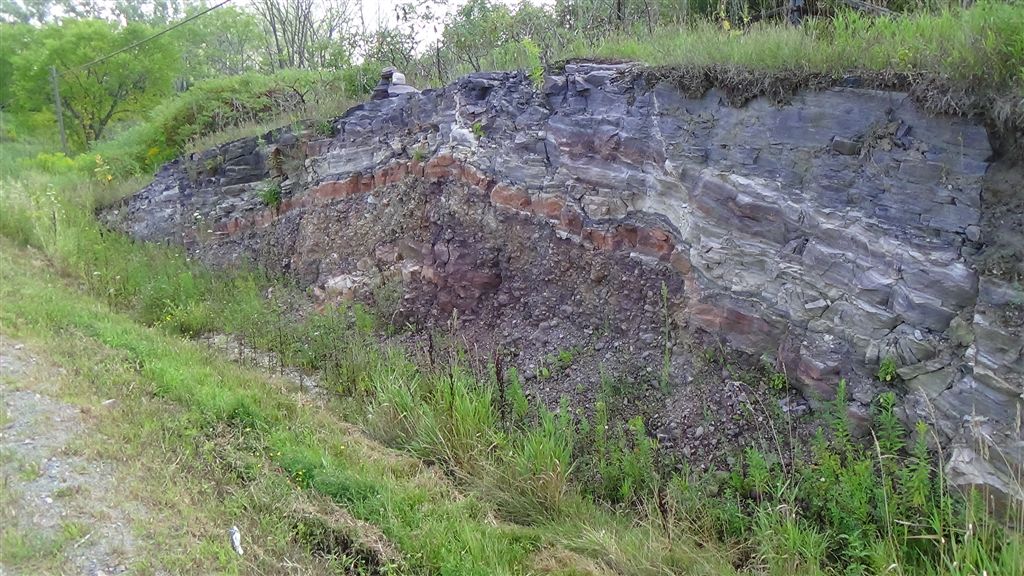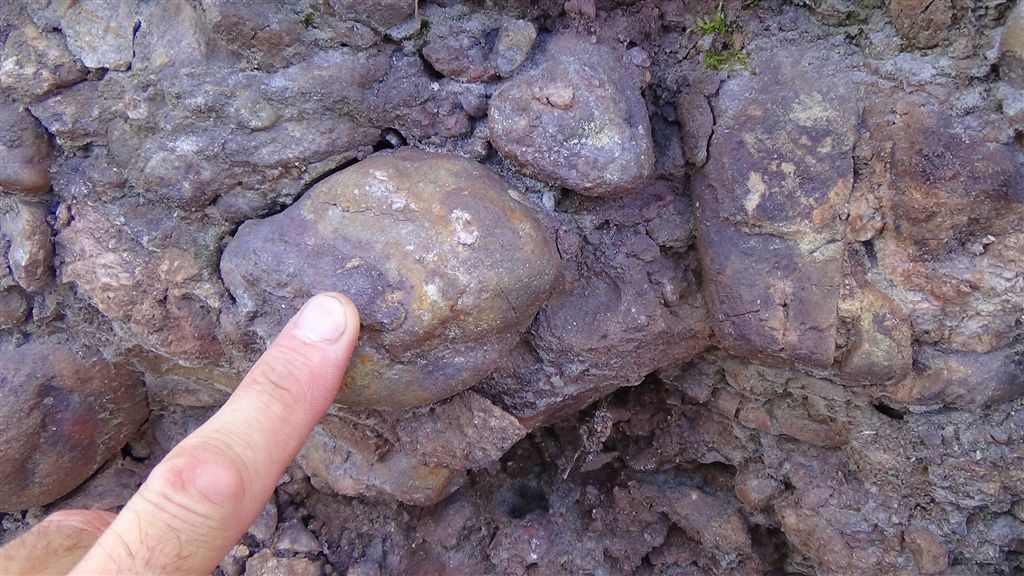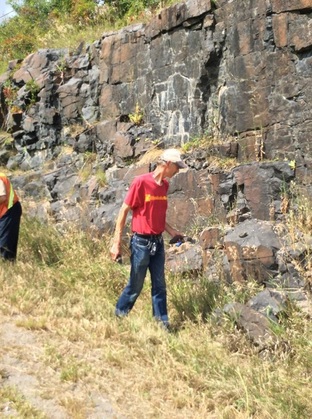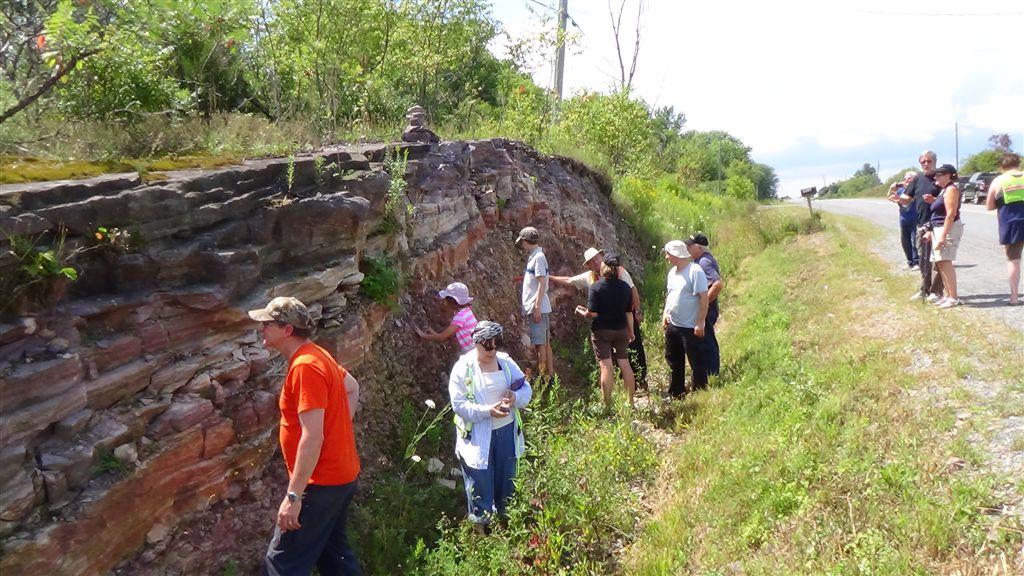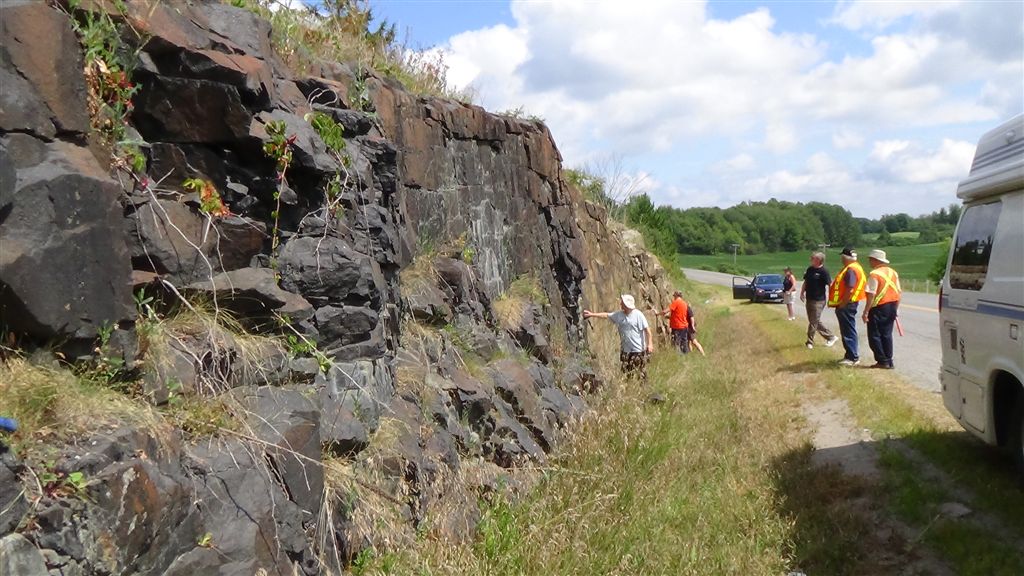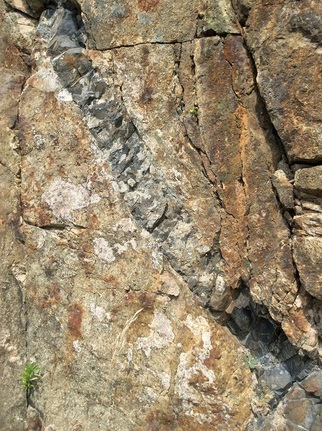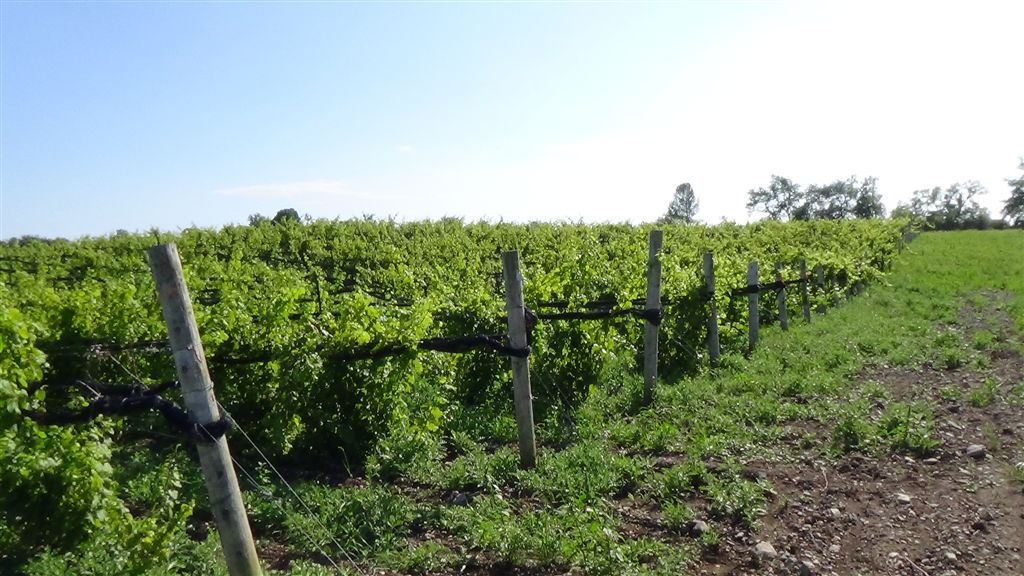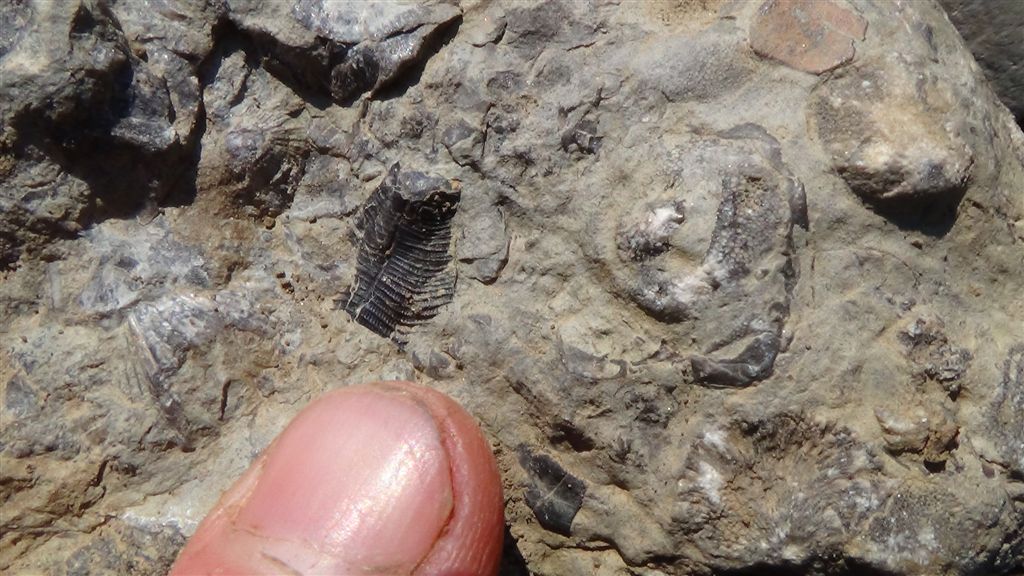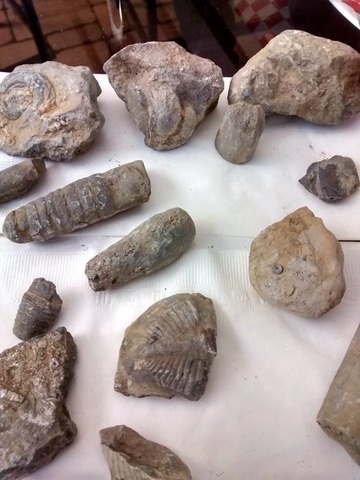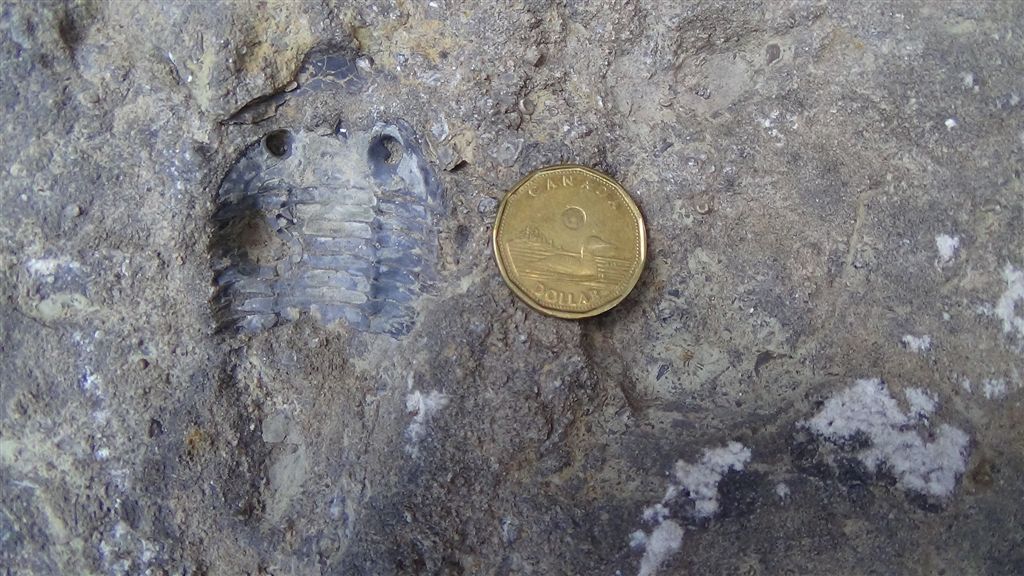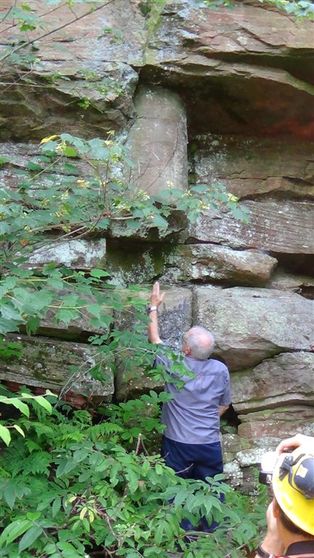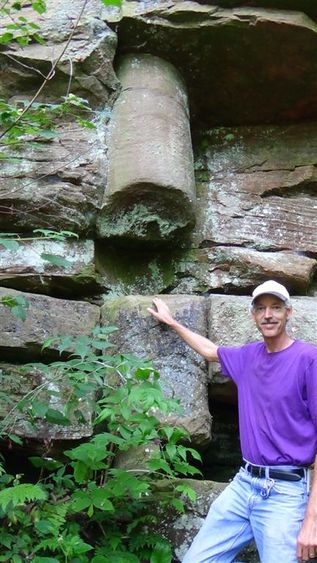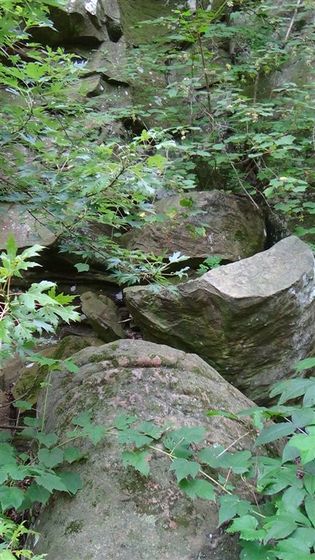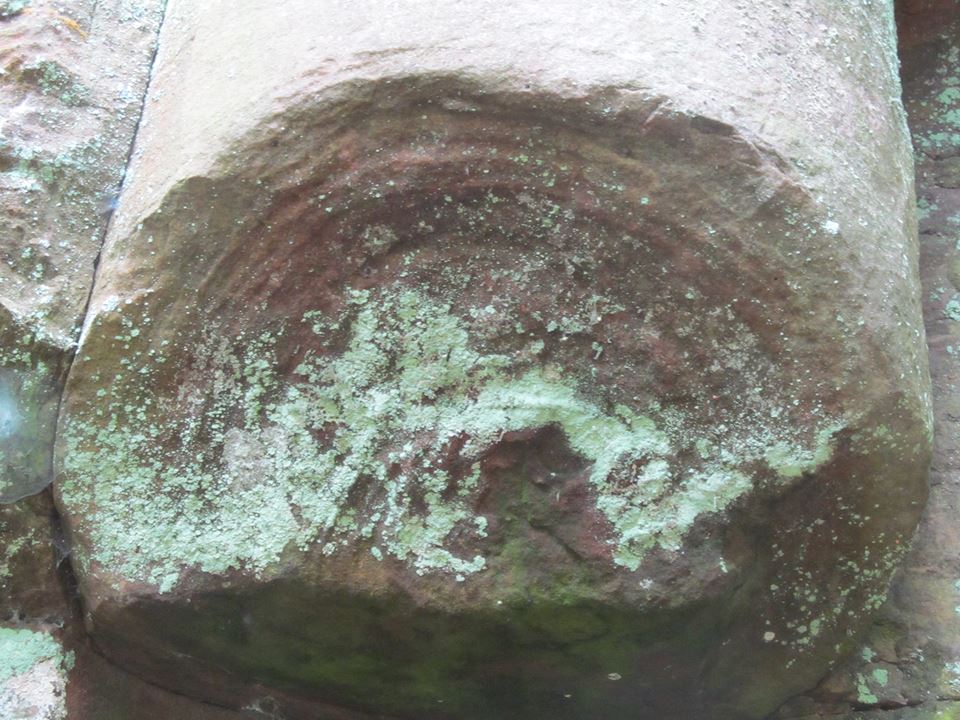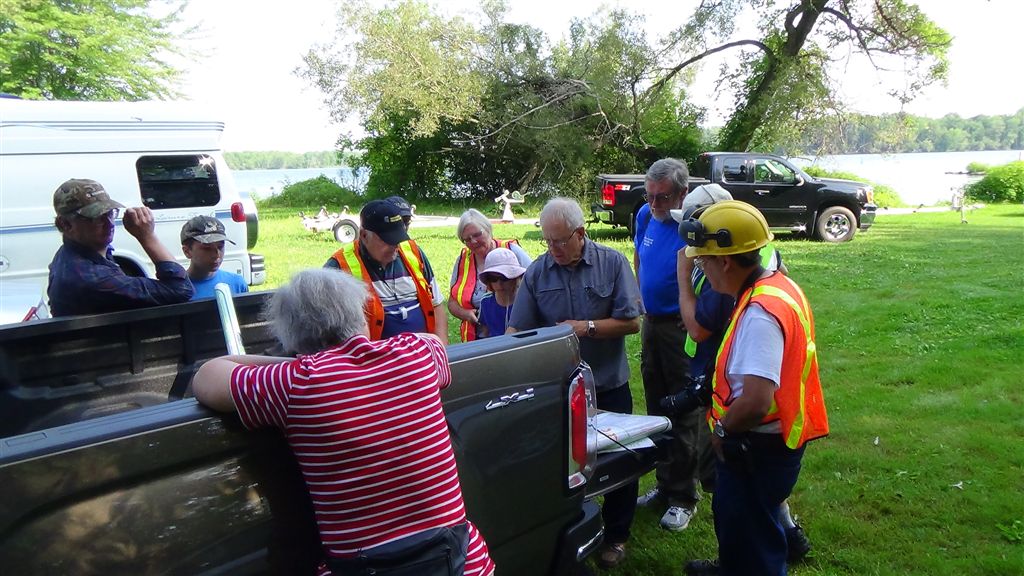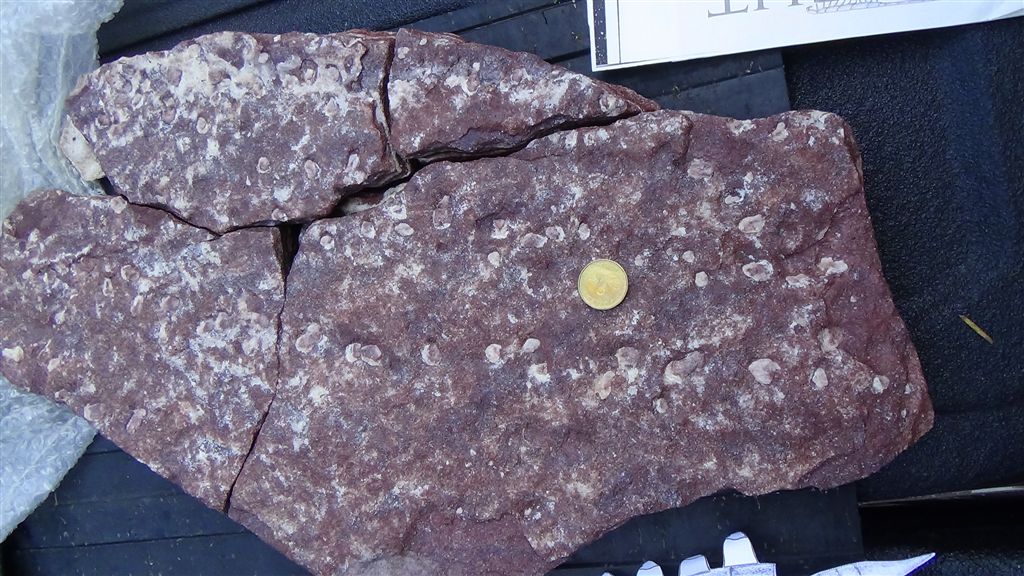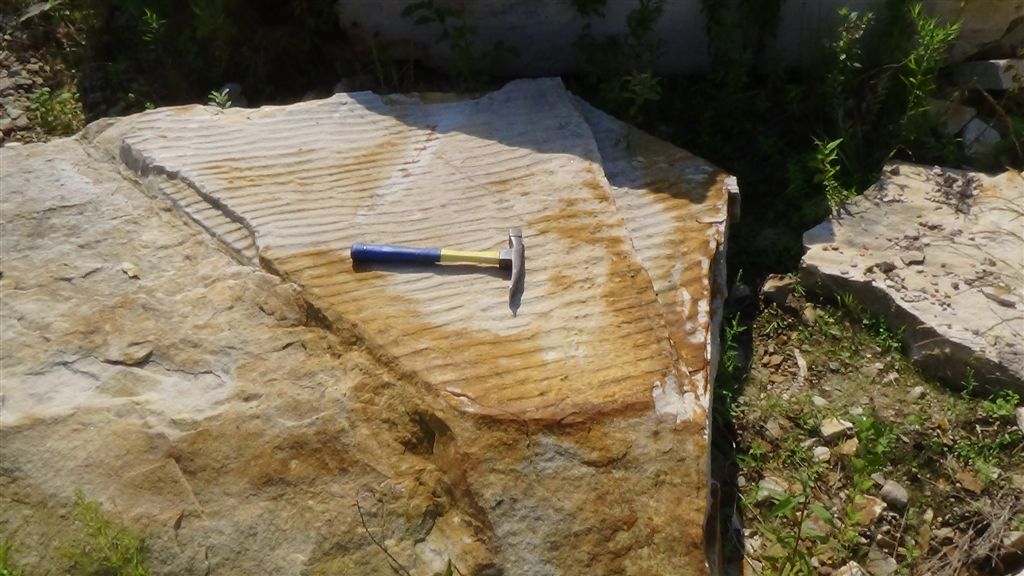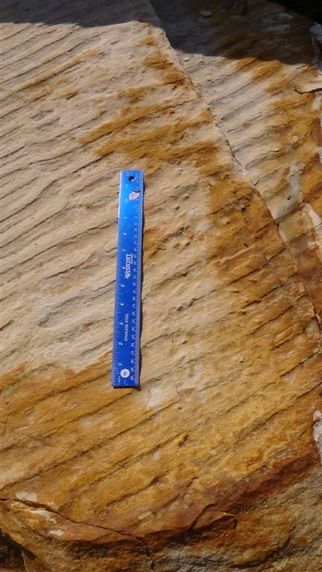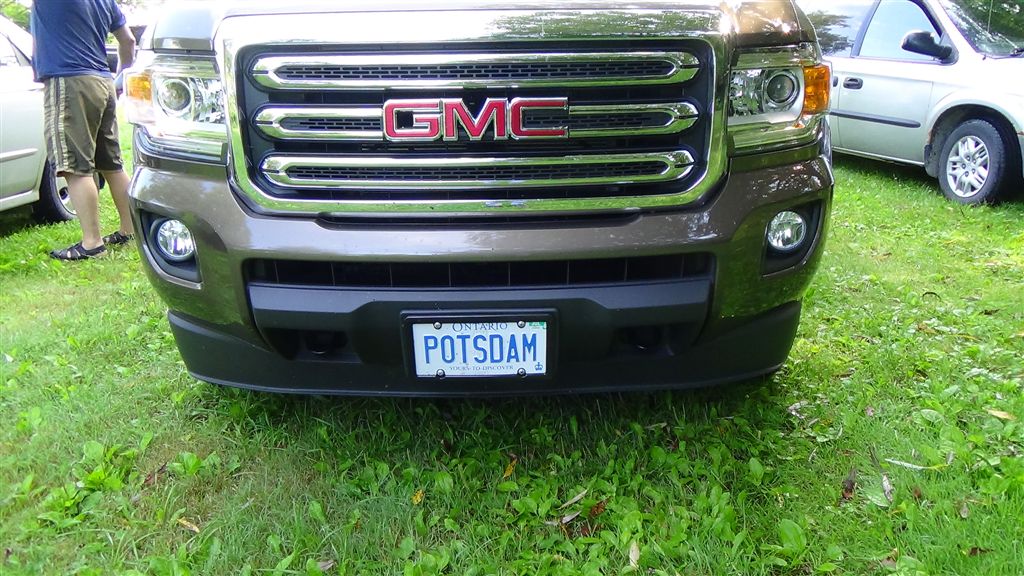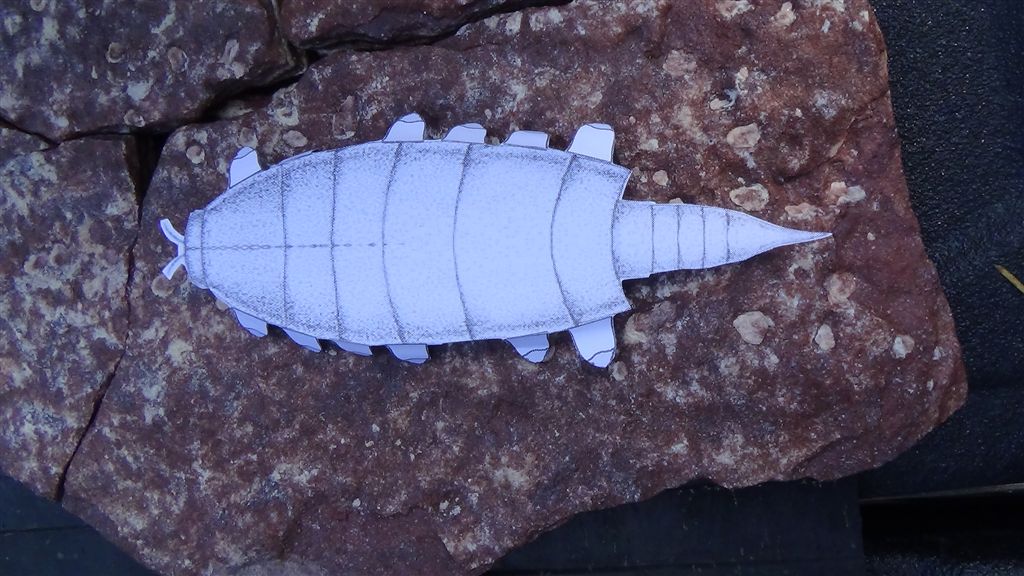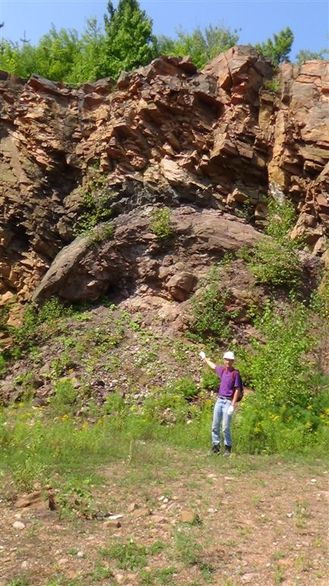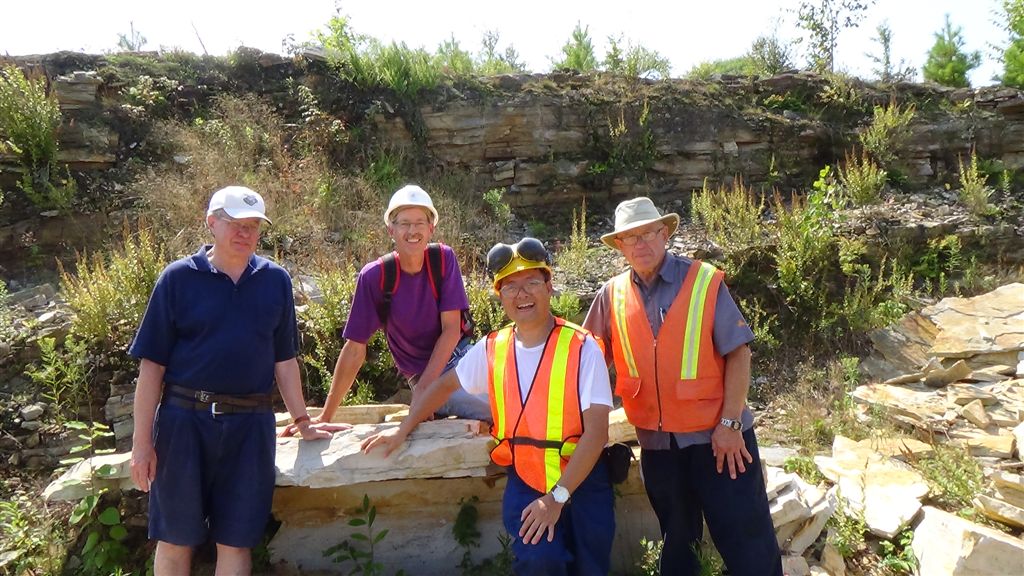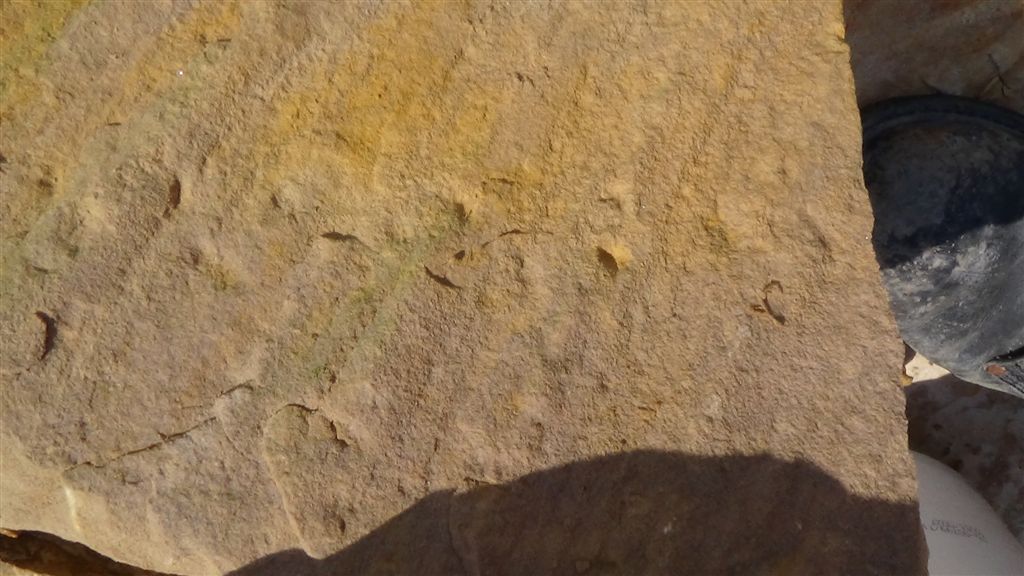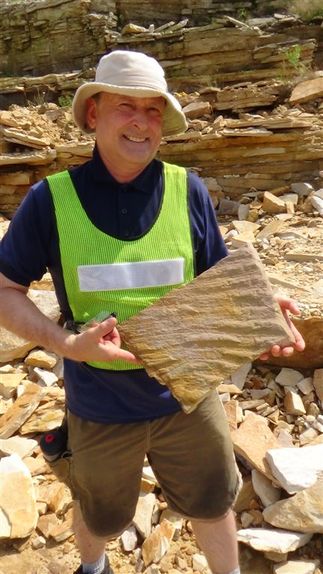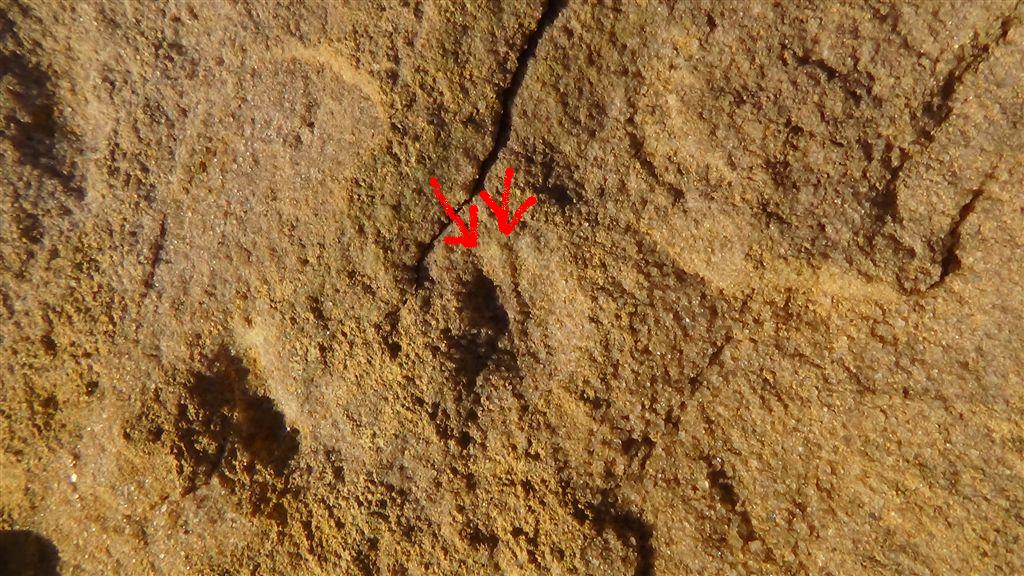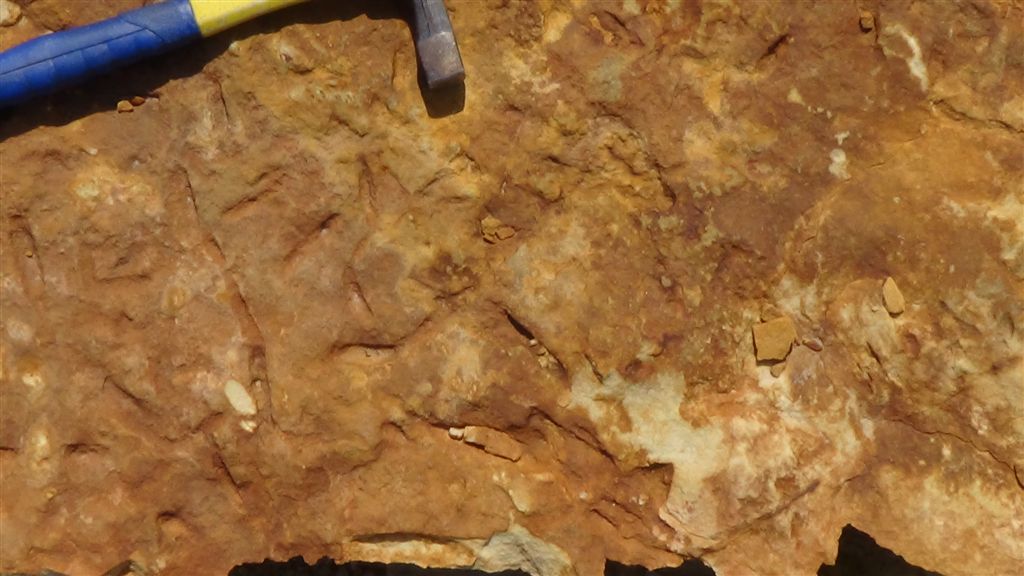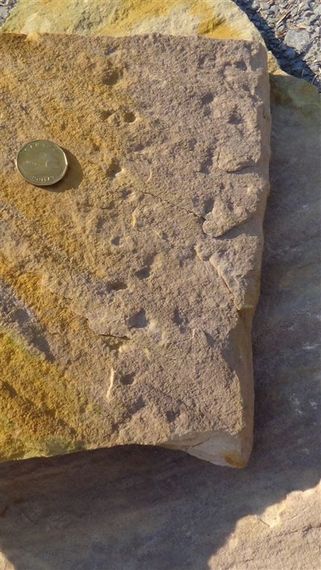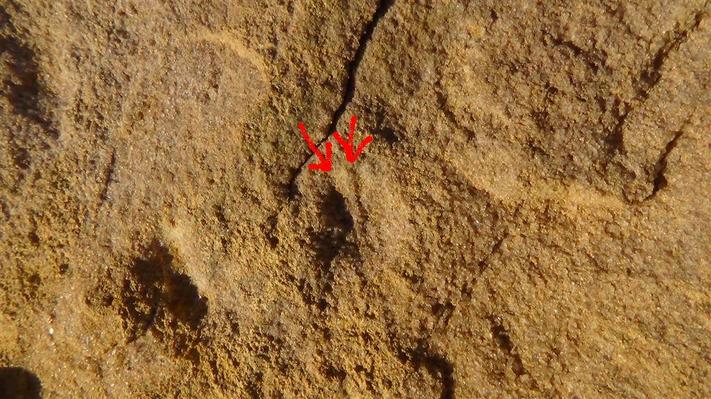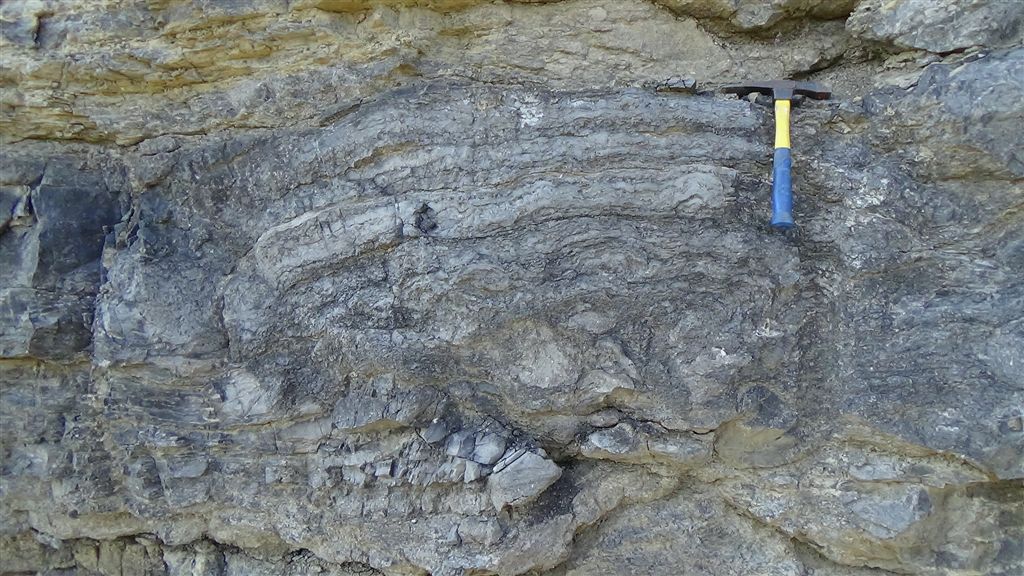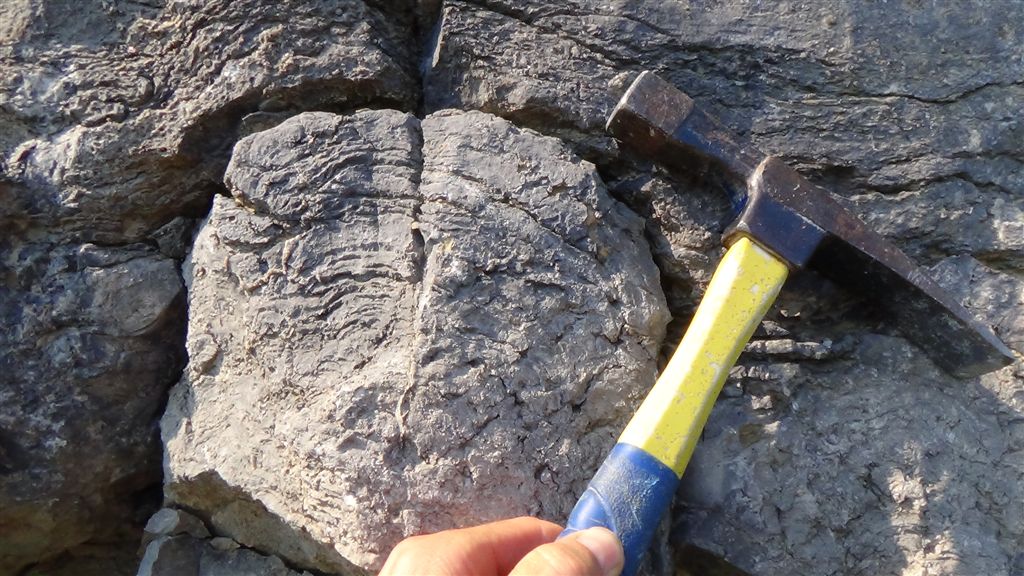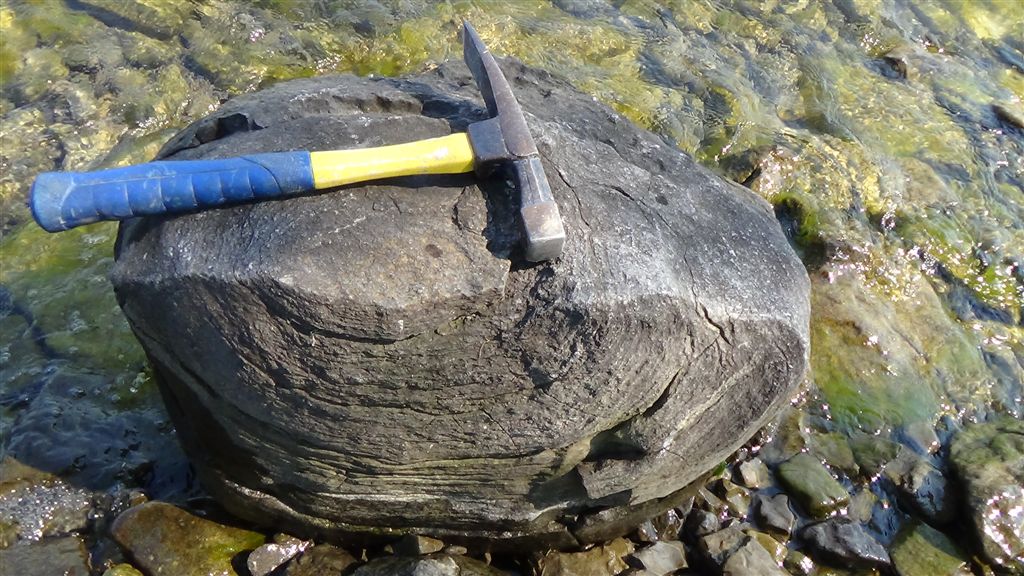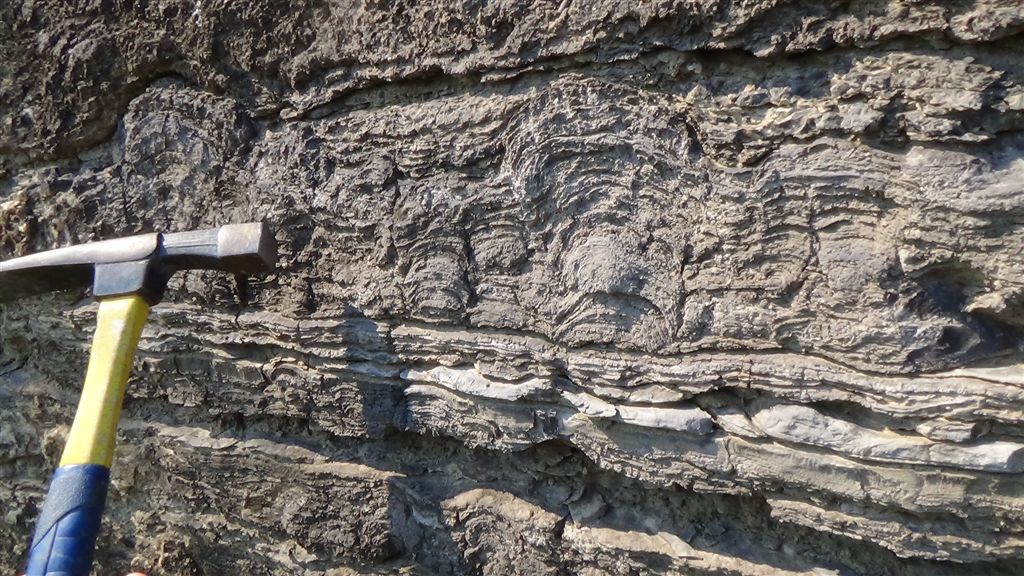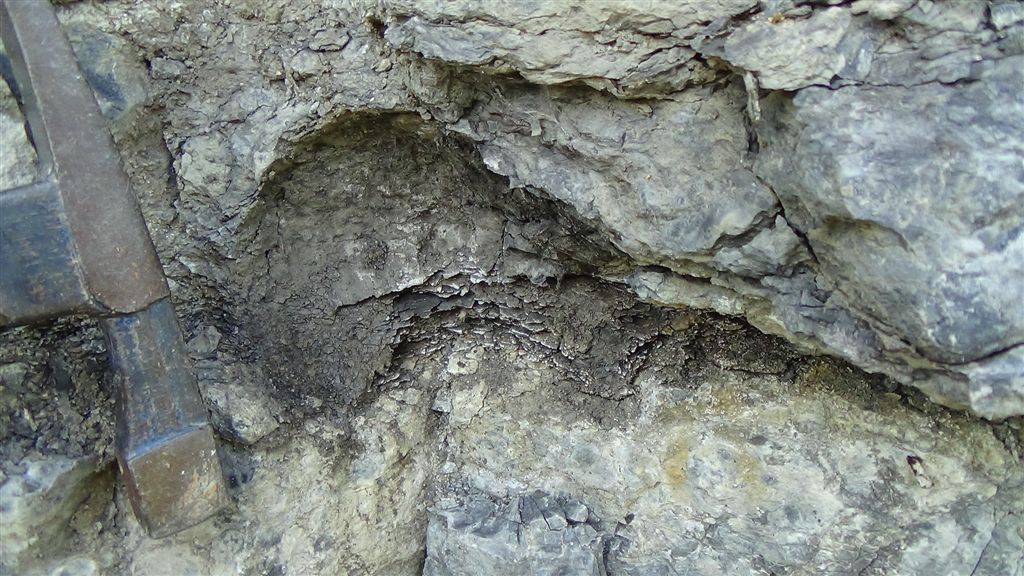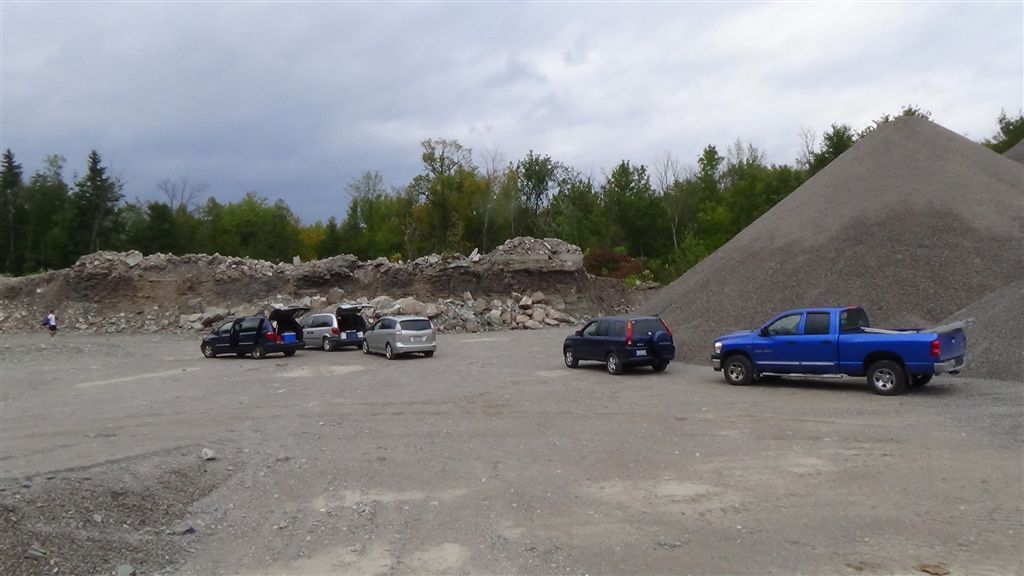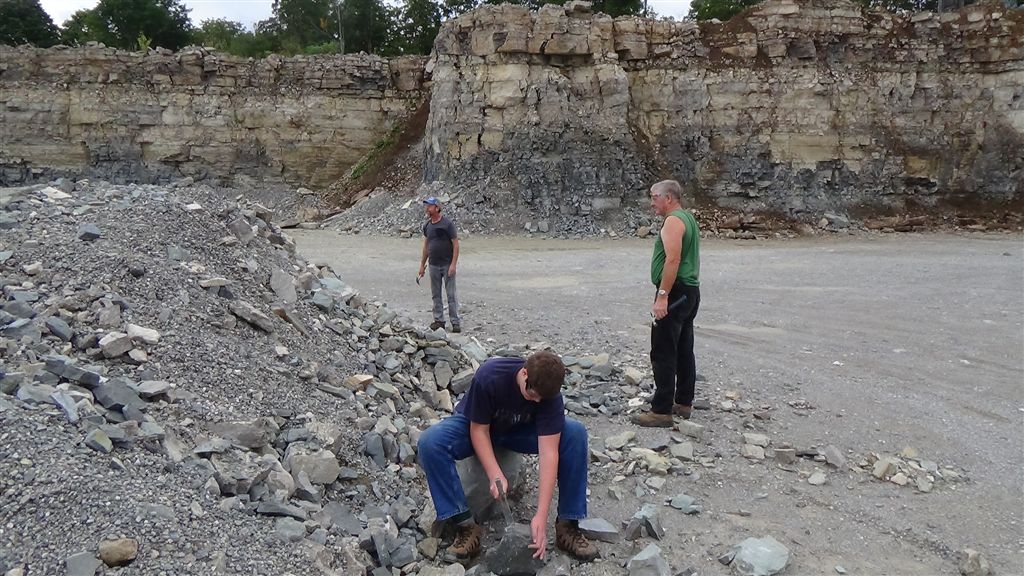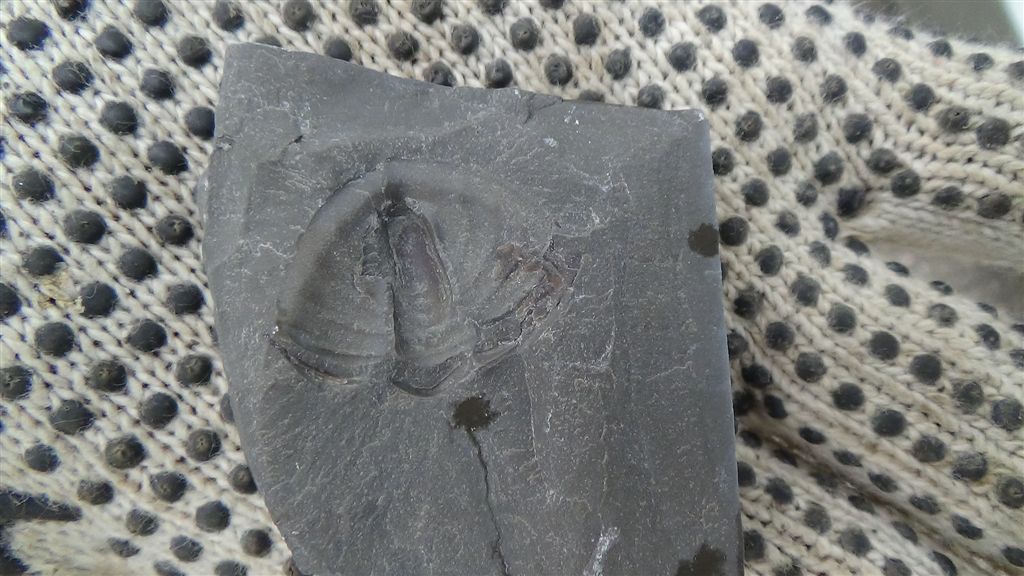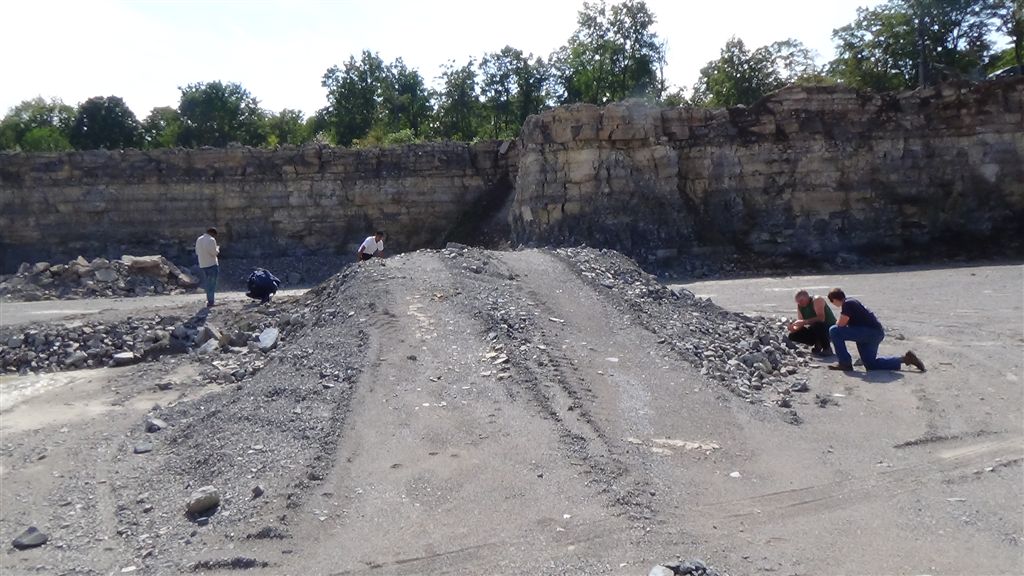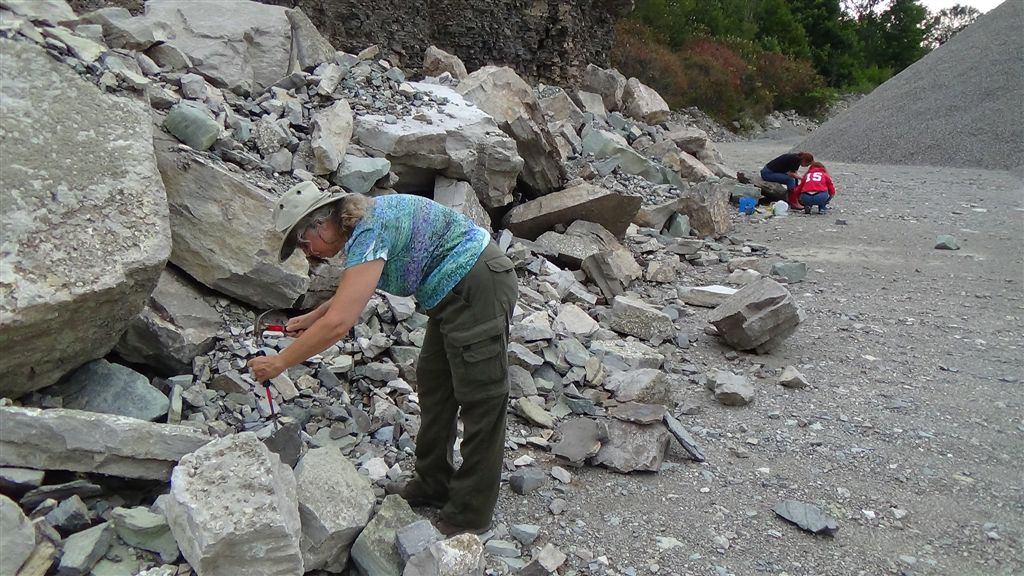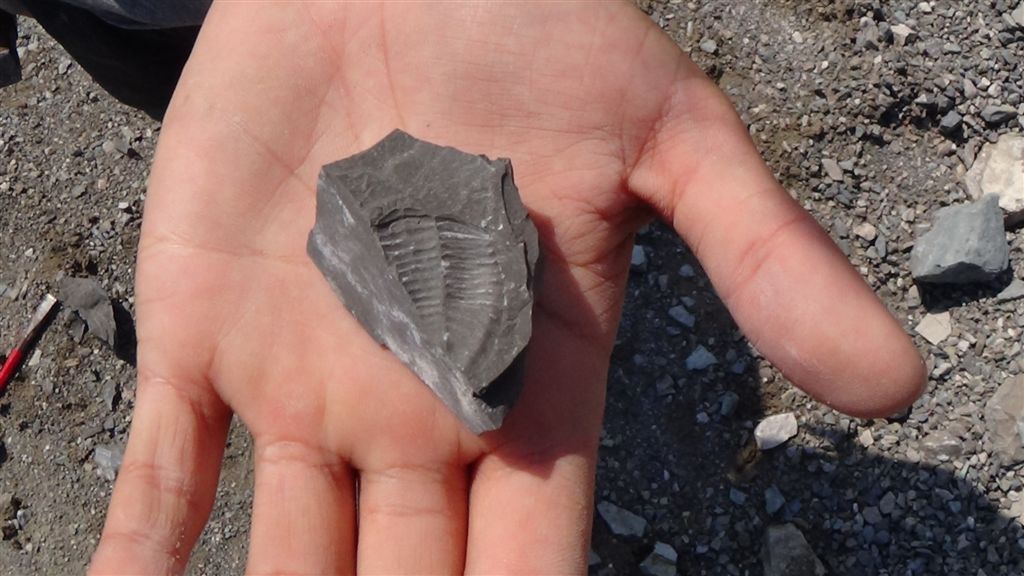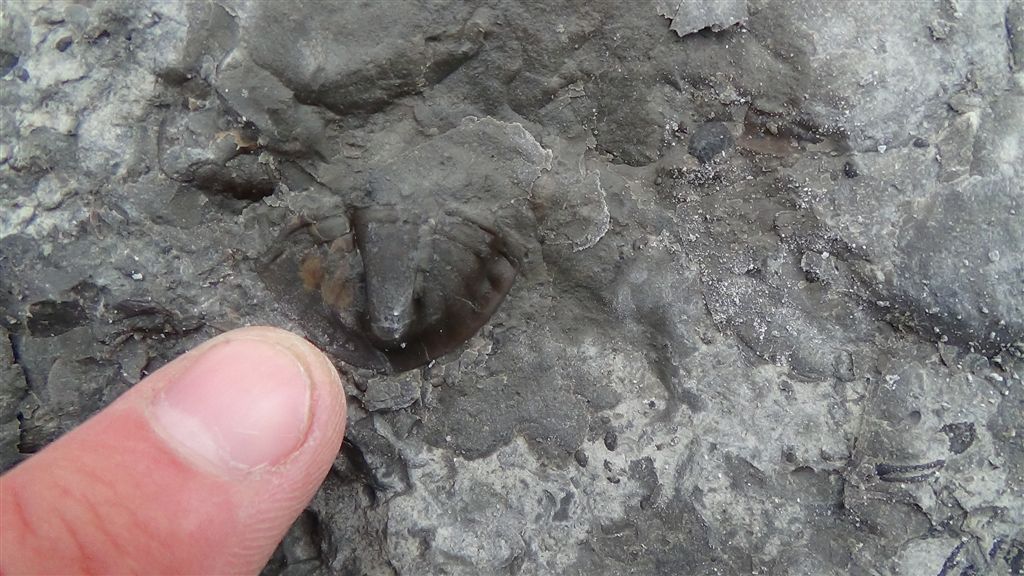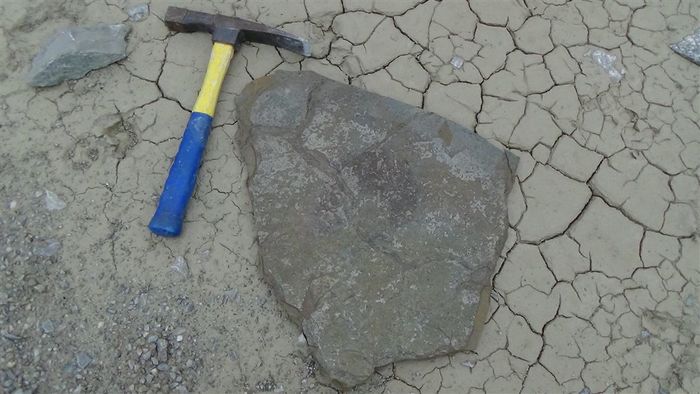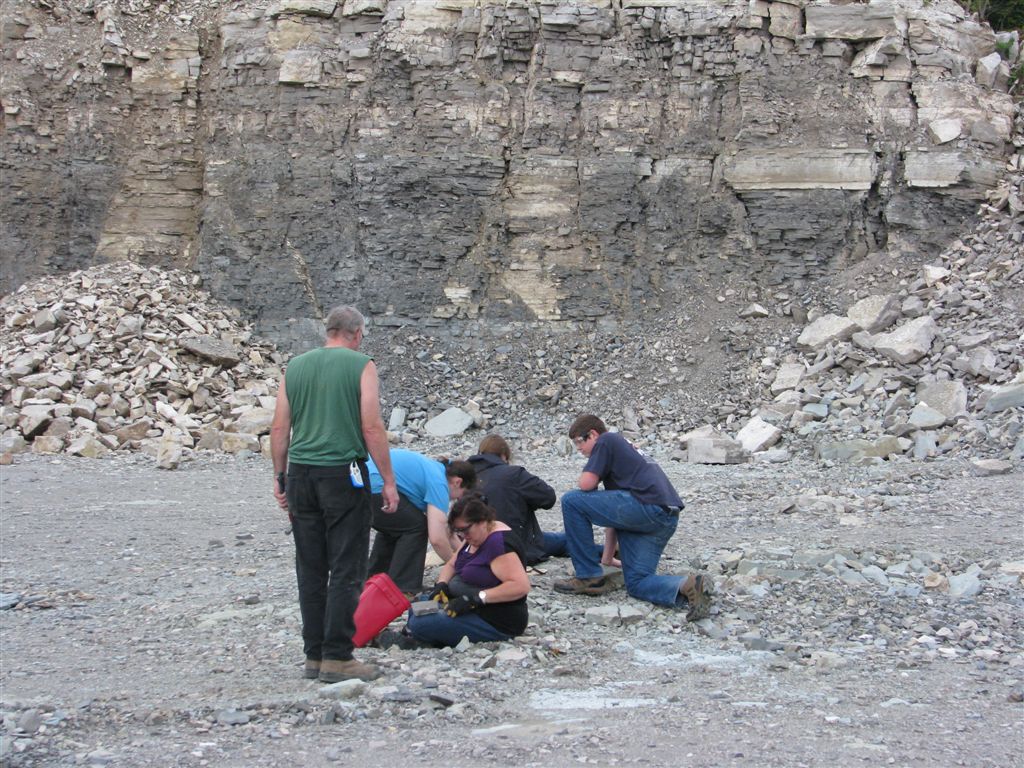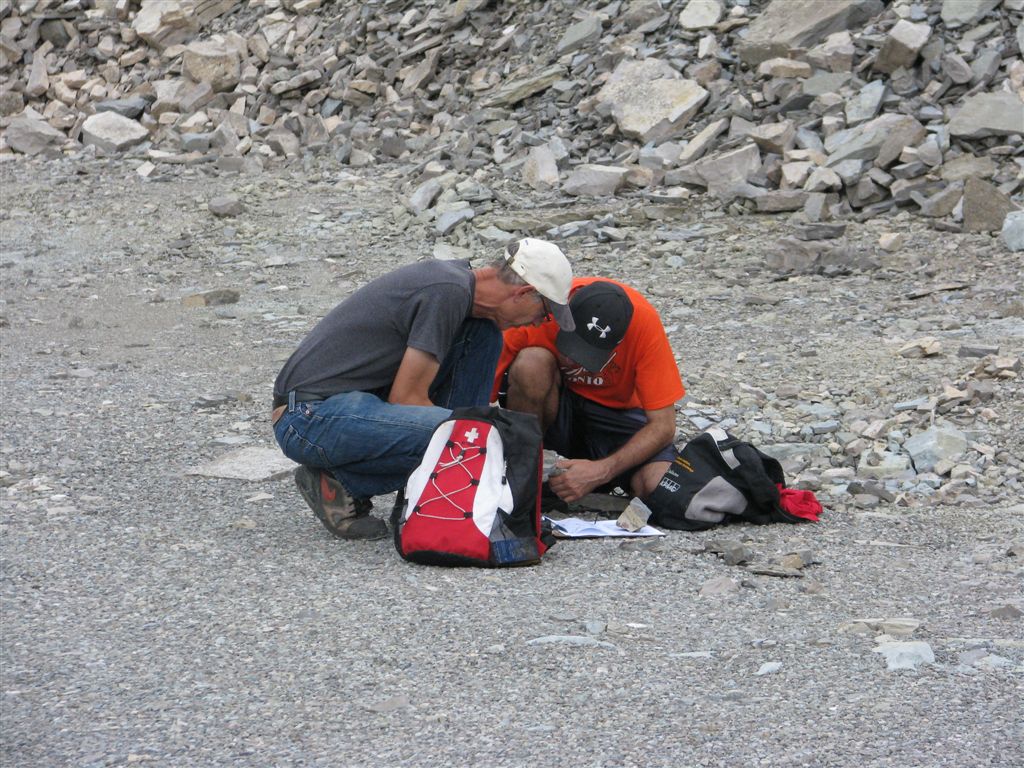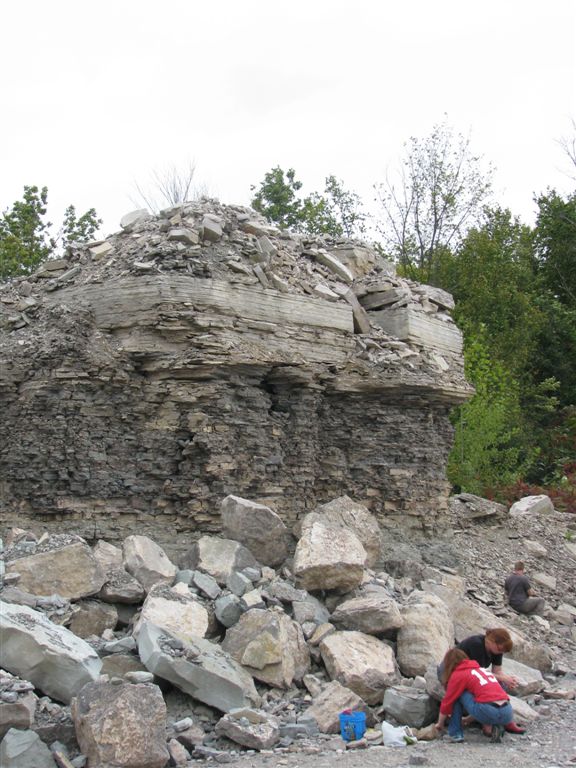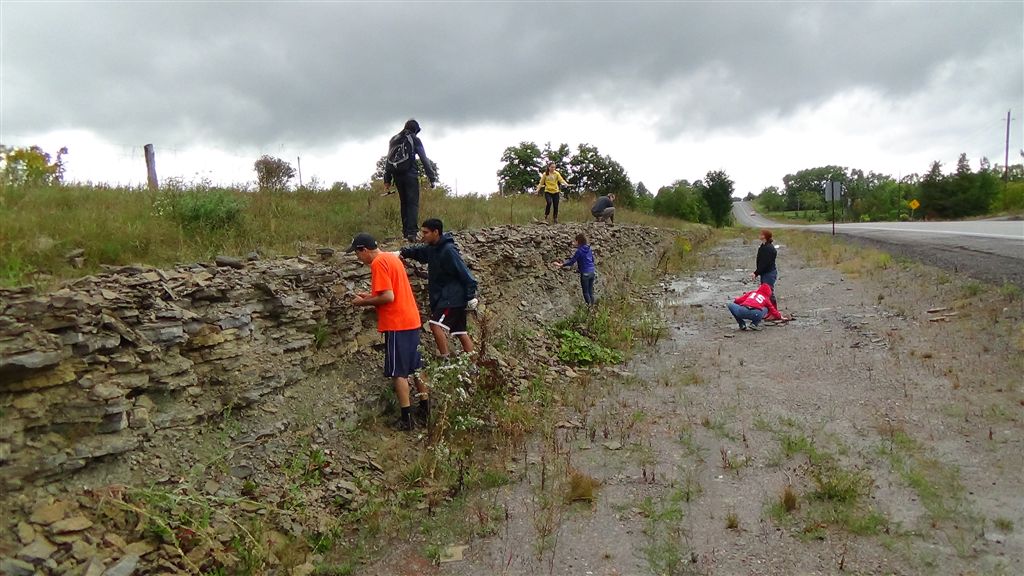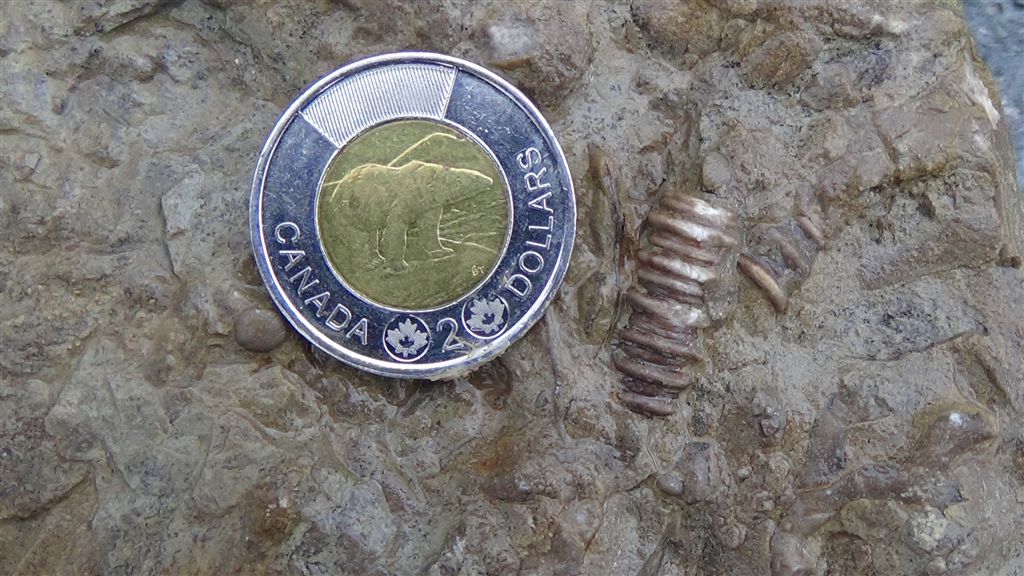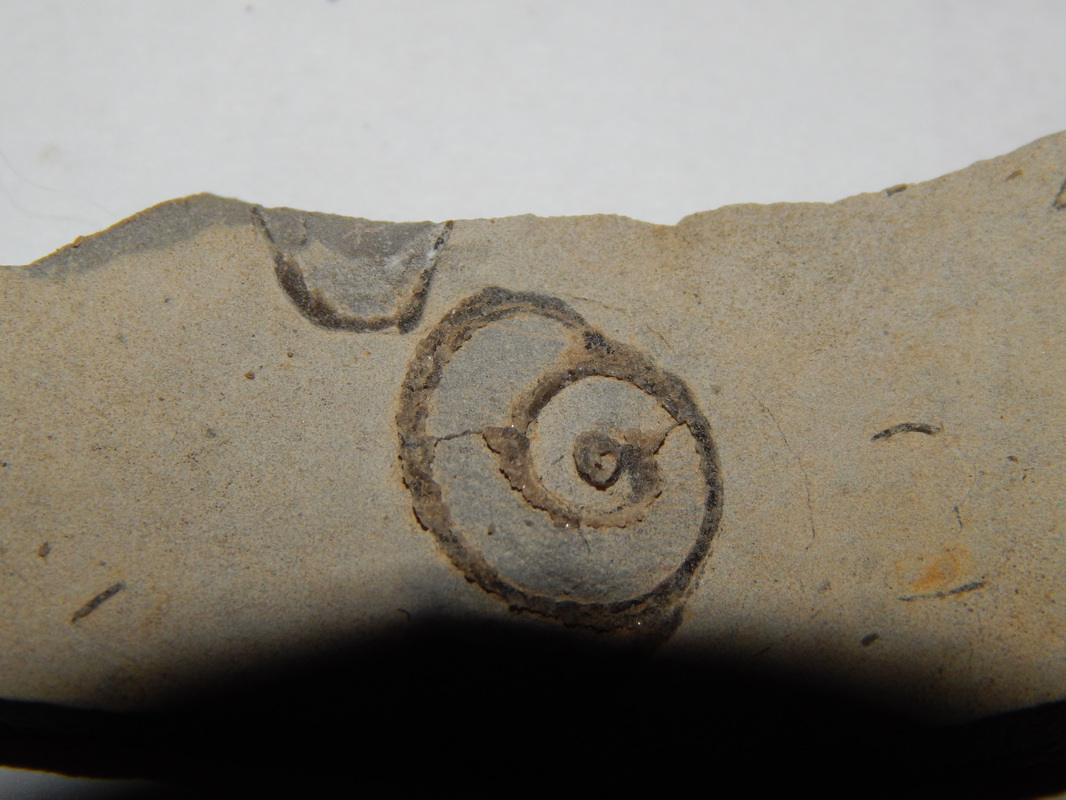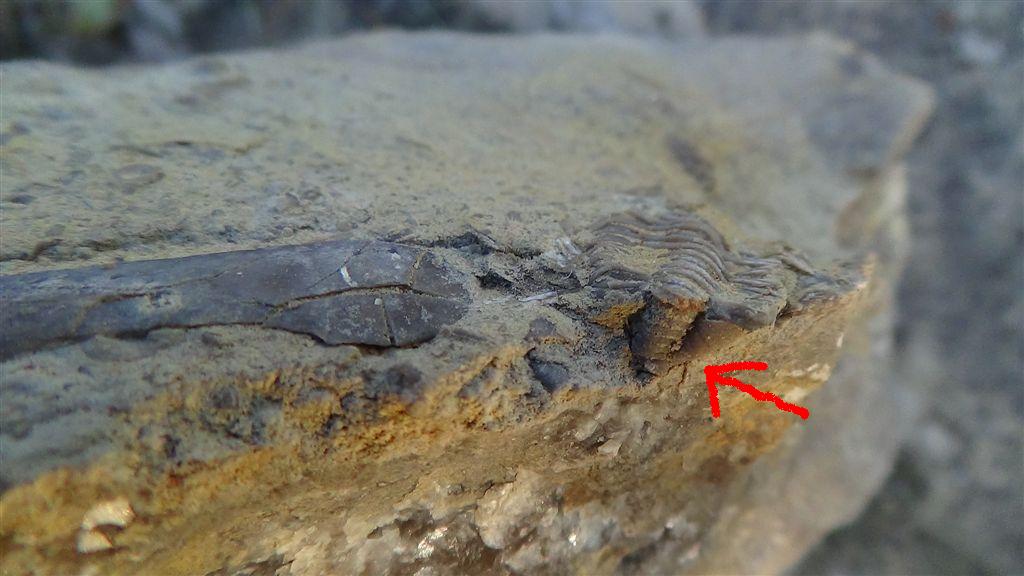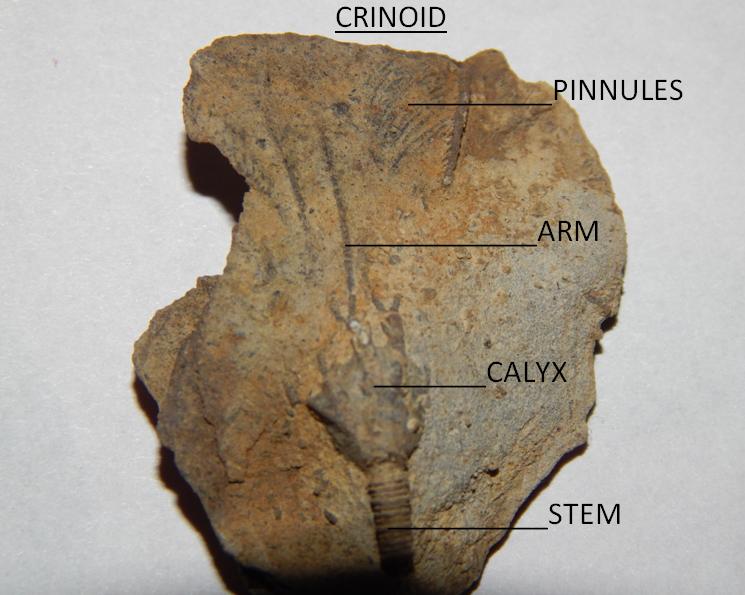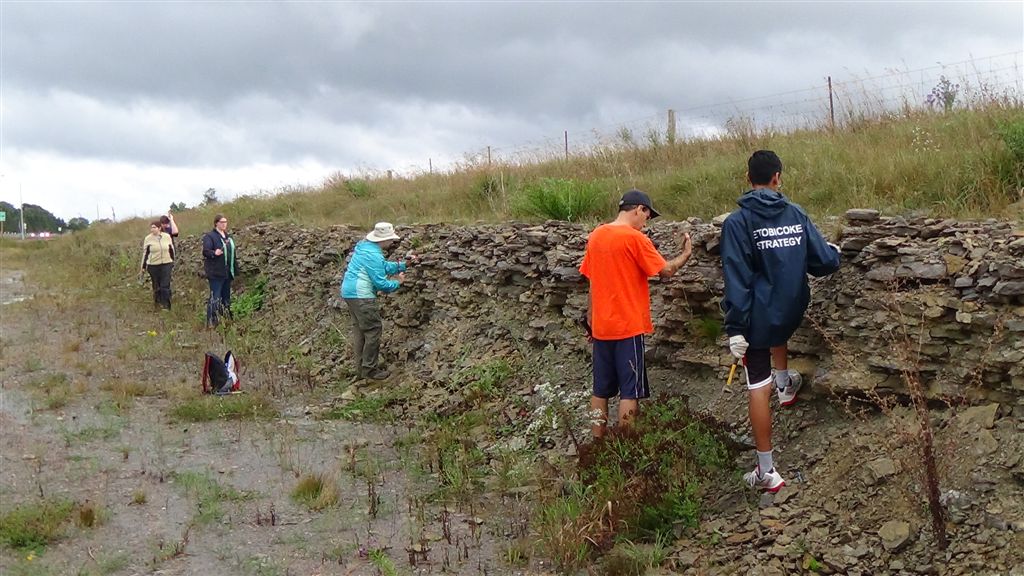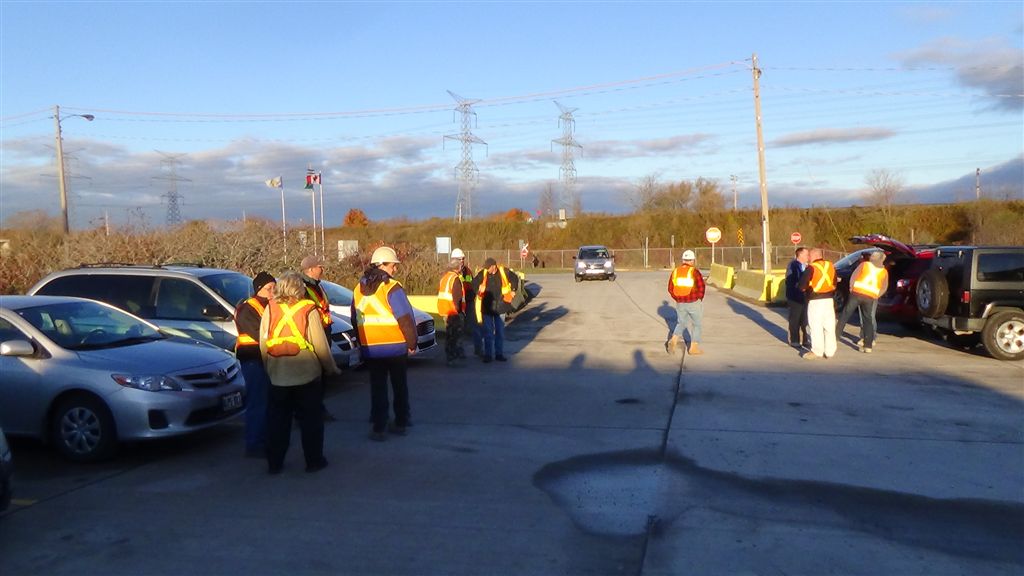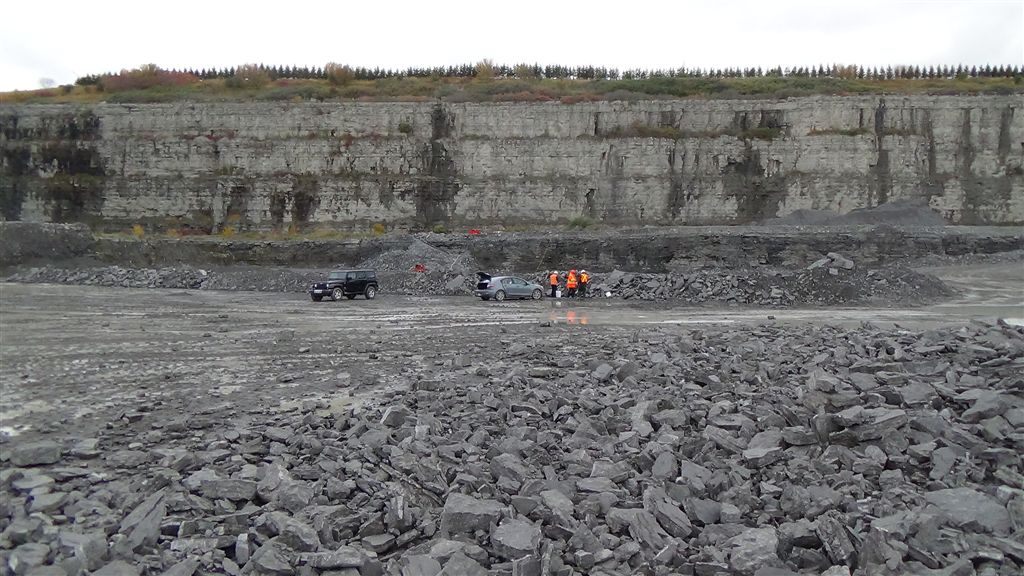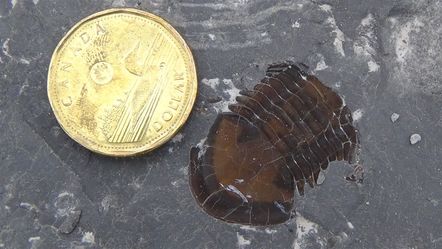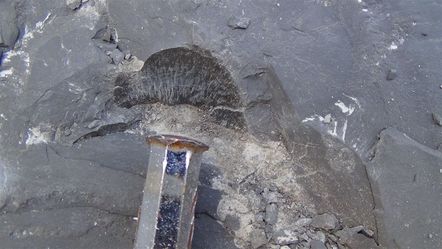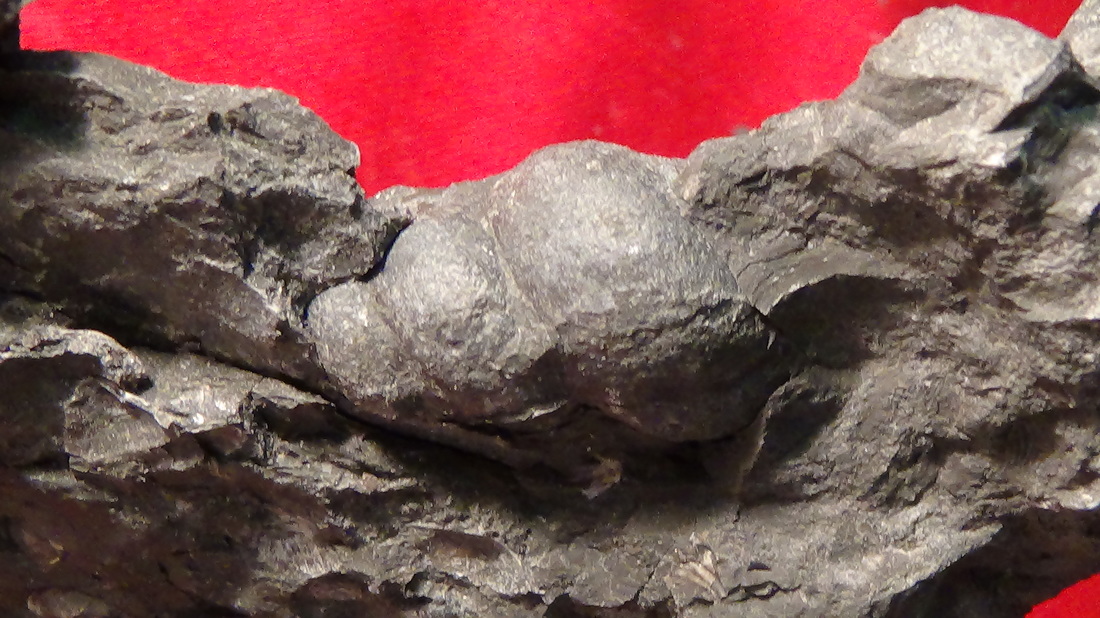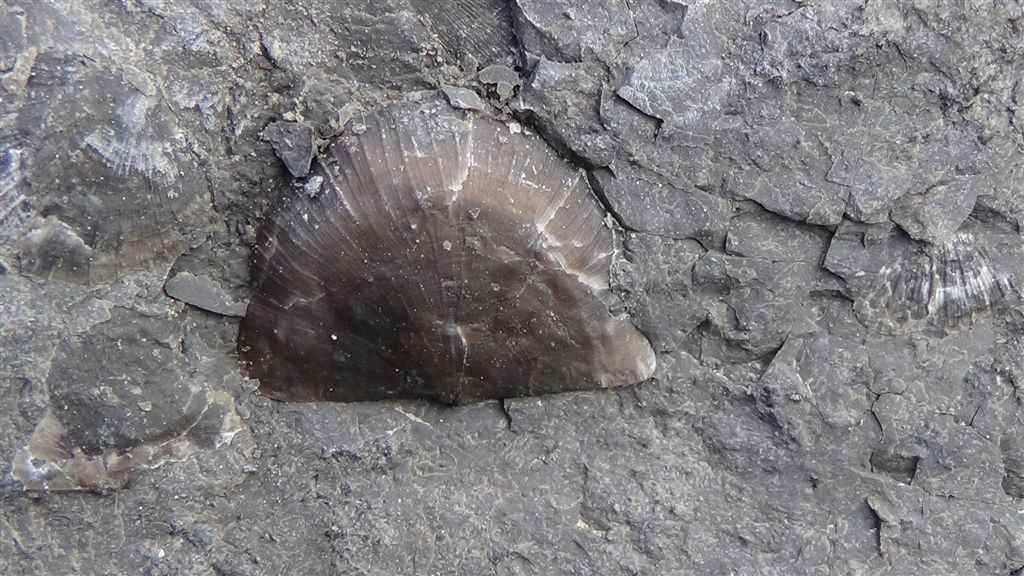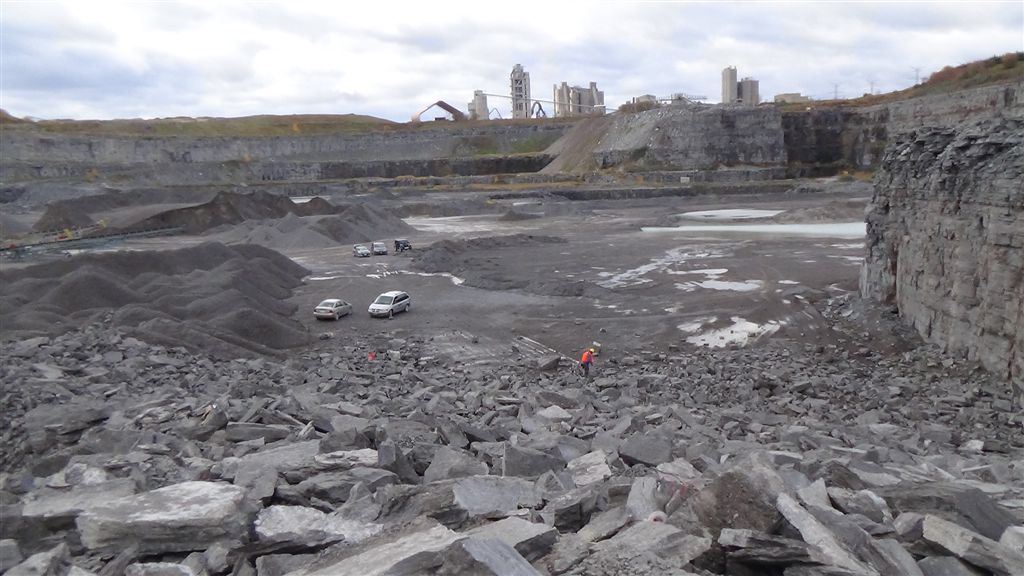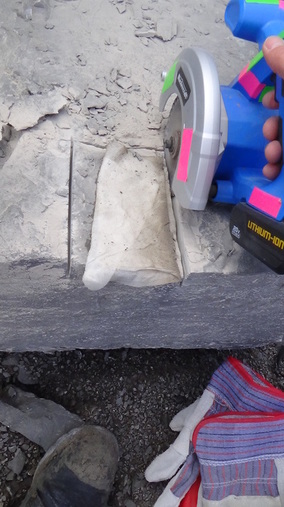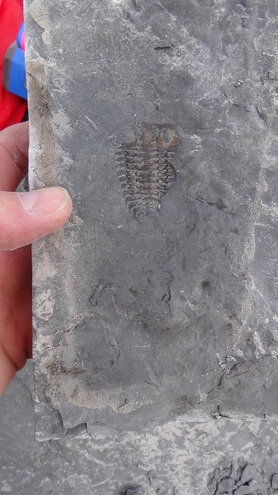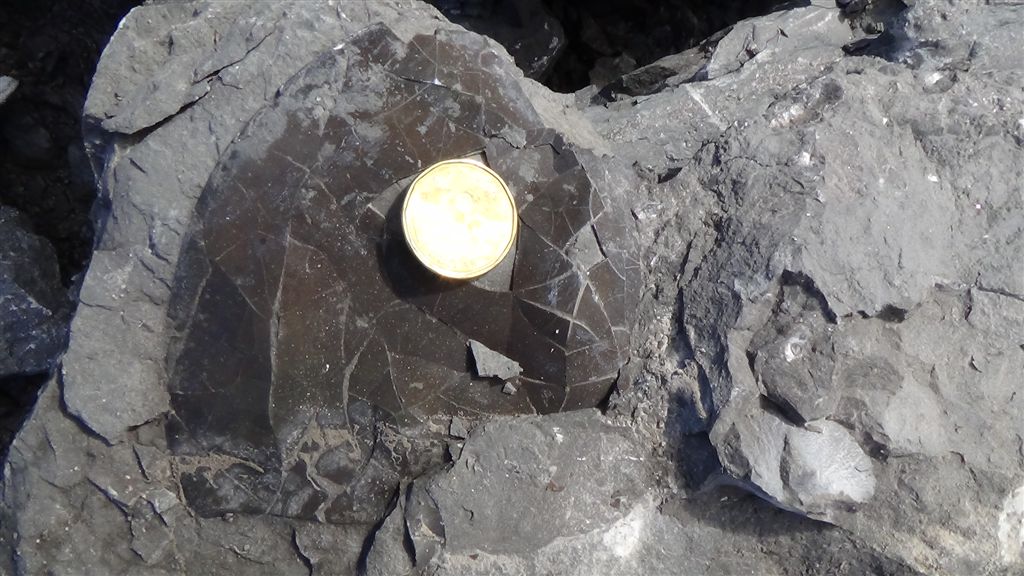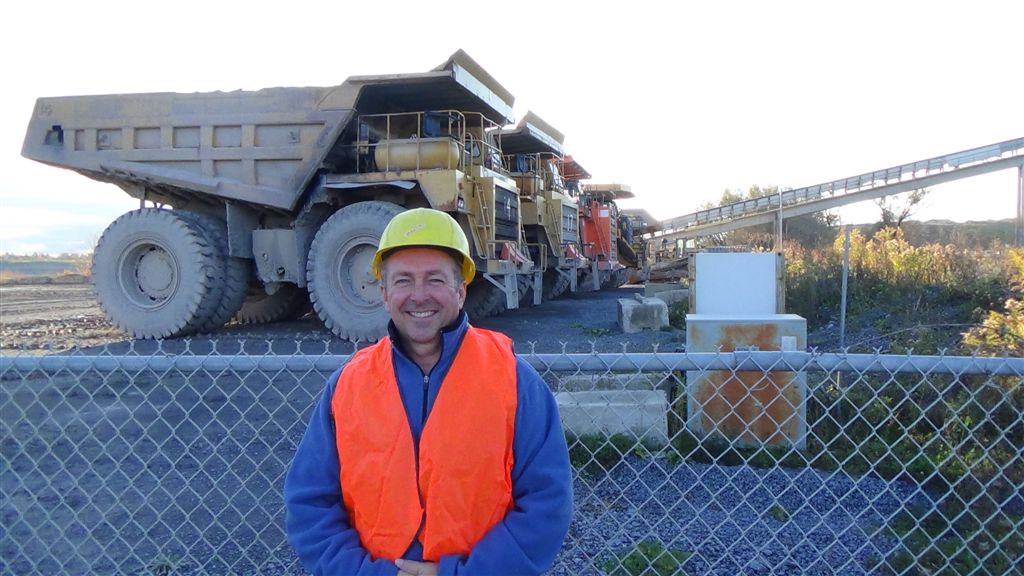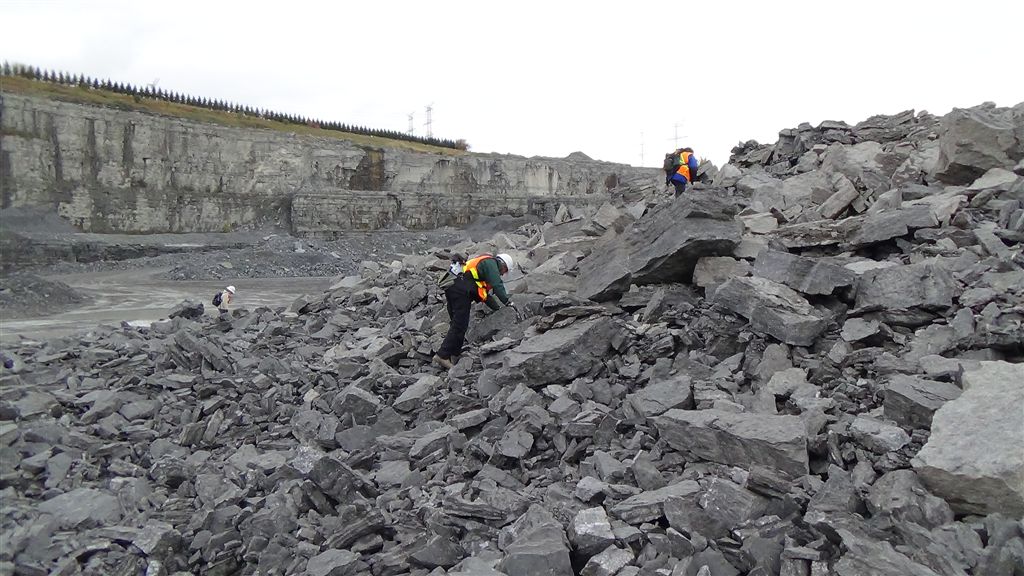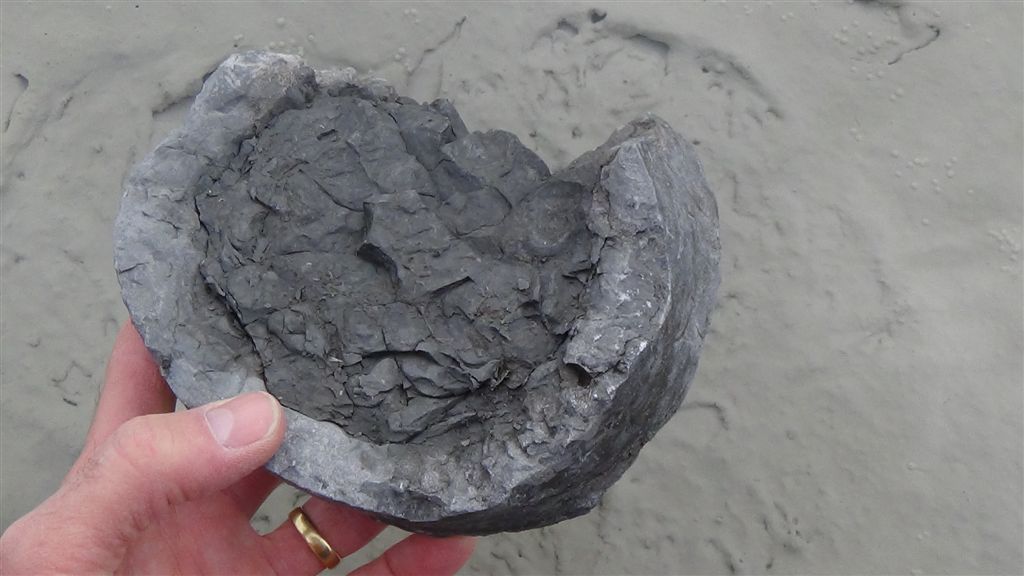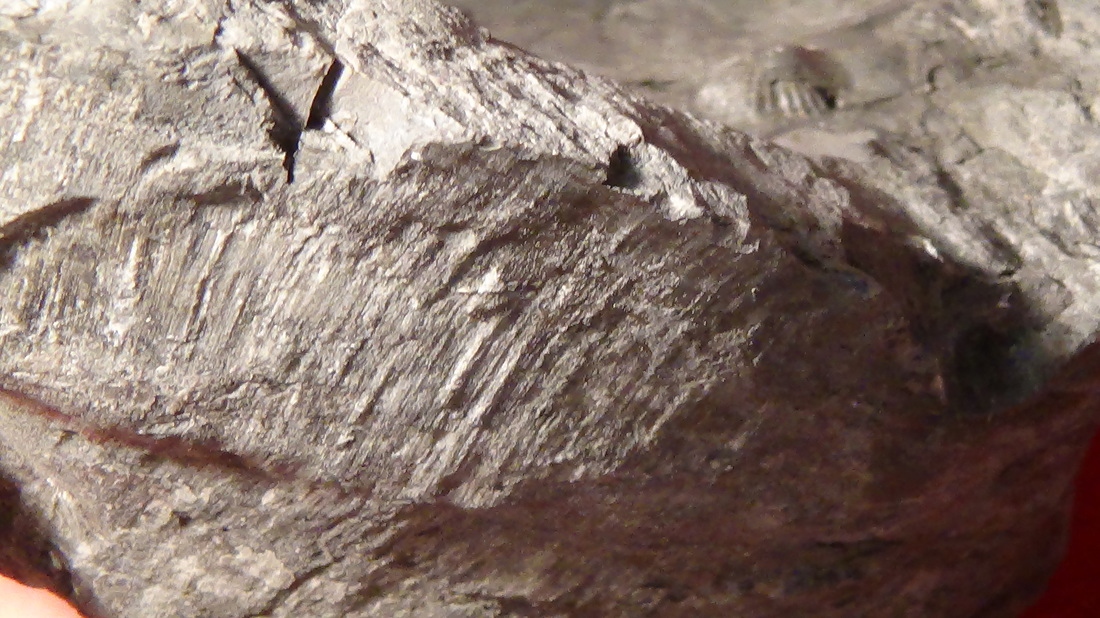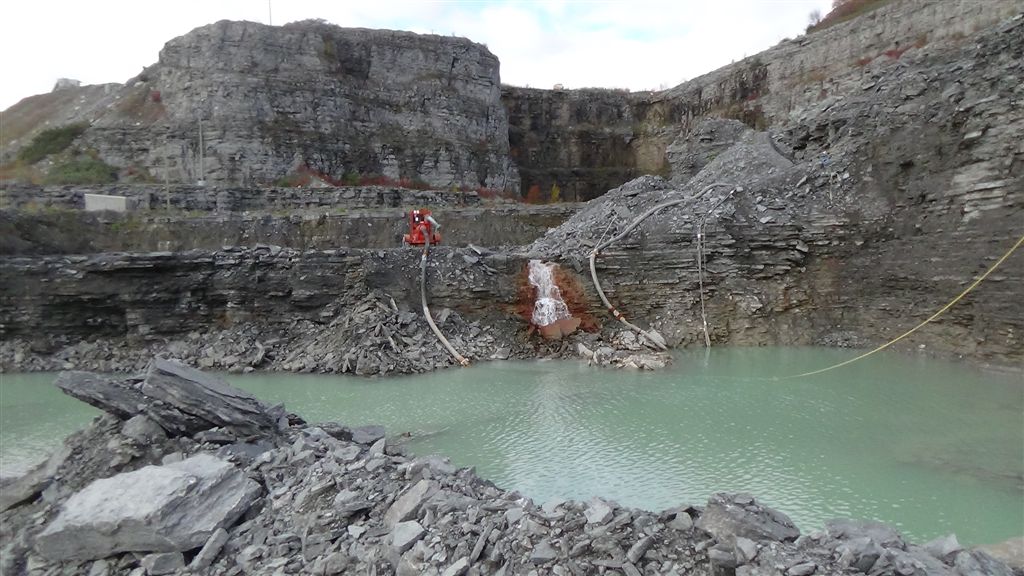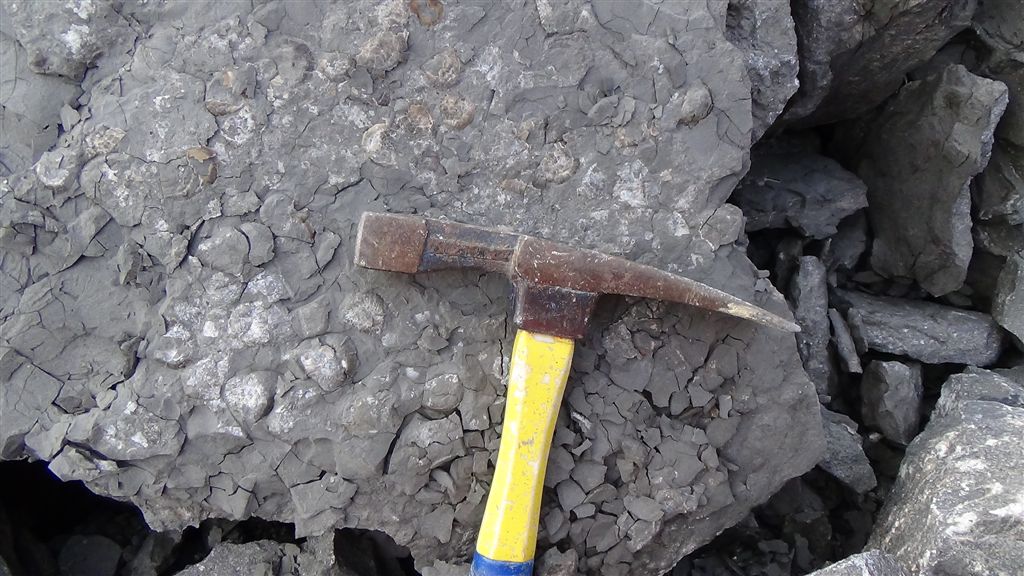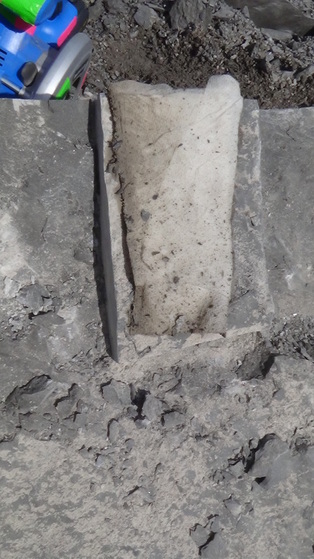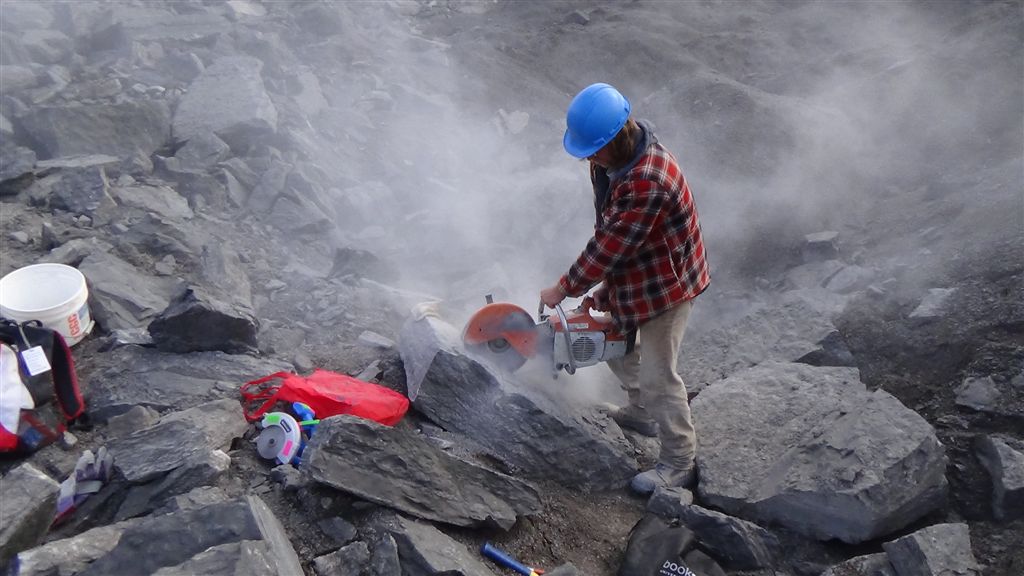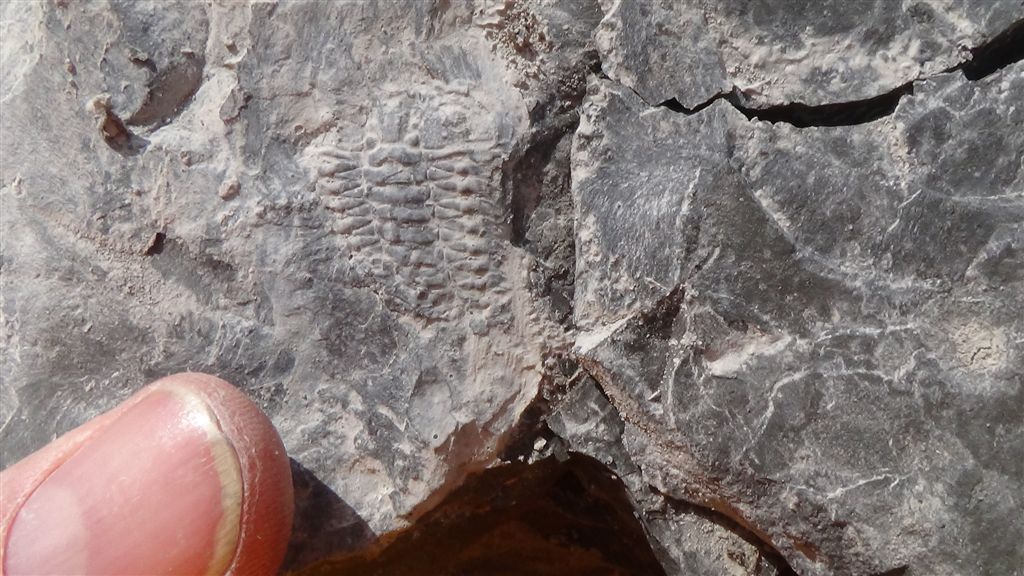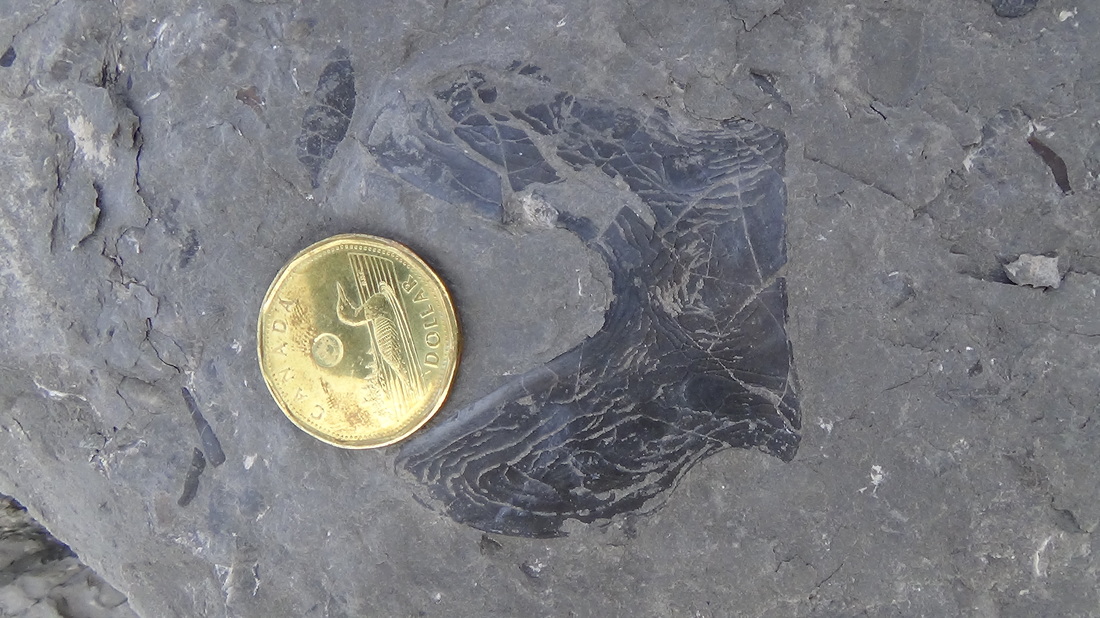NEWSLETTER FALL 2015
Isaiah 12
4 And in that day you will say:
“Praise the Lord, call upon His name;
Declare His deeds among the peoples,
Make mention that His name is exalted.
5 Sing to the Lord,
For He has done excellent things;
This is known in all the earth.
New King James Version (NKJV)
4 And in that day you will say:
“Praise the Lord, call upon His name;
Declare His deeds among the peoples,
Make mention that His name is exalted.
5 Sing to the Lord,
For He has done excellent things;
This is known in all the earth.
New King James Version (NKJV)
Celestite crystals (Photo courtesy of Peter Lee)
It’s been a different year with the museum area being renovated. The annual open house was put on hold and of course museum tours had to be suspended. This gave us more time though for collecting and preparation. The fall fossil trips were unaffected by the renovations. We also were able to attend a geological excursion to the Kingston area to visit some famous sites. Enjoy this year’s newsletter and see the evidence found for Creation and Catastrophe!
MUSEUM RENOVATIONS
Goodwood Baptist Church is having some renovations done, thus mothballing the museum for several months. Here’s the progress so far.
|
Displays cleared out to rip out the existing ceiling.
Displays are moved to an area that is least disruptive.
This duct work will be moved off to the sides to allow more head room in the middle. The furnace in the middle of the room too will be moved off to the side to open up the center area.Now you won’t bump your head as you walk to the kitchen!
|
Boards being removed. Insulation will be sprayed in as an extra sound barrier.
The displays had to be mostly emptied to be moved around safely.
Marc Kenyon marvelling at the new furnace.
|
FOSSIL PREPARATION
Some great trilobites were found this year and last at St. Mary’s Quarry in Bowmanville Ont. Click on the FOSSIL PREPARATION
tab to see the needed prepping that had to be done. Some with good results and some not!
tab to see the needed prepping that had to be done. Some with good results and some not!
LINCOLN QUARRY, BEAMSVILLE ONT. MAY 9TH, 2015
|
It was a hot day for May (27c, 80.6f) as around 20 collectors gathered at the entrance to Lincoln Quarry in Beamsville Ontario to search minerals.
CCFMS (Central Canadian Federation of Mineralogical Societies) members In front of Lincoln Quarry where we're just about to hear a safety talk.
Collecting in a fresh blast pile.
|
Quarry entrance. I didn't realize how many years it's been since I've been here last. It was back in 09. Mostly minerals are found in this Middle Silurian bituminous (oil bearing) dolostone.
In the quarry.
This new section they blasted into was all new to me. Salome Legemaate pointing to the first nice find of the day.
|
|
Another vug.
|
Here is a deep vug.
|
A slab containing several vugs. Vugs are small cavities inside rock that are formed through a variety of processes. They can form by a disintegrated fossil creating a space, by cracks and fissures and by dissolution (the dissolving of the rock by water movement). The open spaces then allow the free development of external crystal forms. Hydrothermal action (hot water) is thought to play a part in the formation of vugs and indicates extensive geologic catastrophism. This is exactly what you would expect to find as a result of a world wide year long flood such as Noah’s Flood.
(Ref. TJ Article Volume 15 Issue 3, More Evidence Against So-called Paleokarst
by John Woodmorappe.)
(Ref. TJ Article Volume 15 Issue 3, More Evidence Against So-called Paleokarst
by John Woodmorappe.)
|
White gypsum and smoky selenite.
Nice shot showing the vast size of this particular part of the quarry.
Peter Lee found an excellent celestite crystal.
|
A first for me was finding amazing sphalerite crystals in the form of spheres.
It's show time at the end of the dig where everyone shows off their treasures.
This celestite has crystalized in a unique way. Image courtesy of Peter Lee.
|
|
This time the Mrs. came along on the dig. We came away with some buckets of crystals for museum handouts and a new mineral addition, sphere shaped sphelerite crystals!
|
Crystals radiating out from the center.
|
BANCROFT GEMBOREE AUGUST 1ST 2015
We made our annual trip to a large rock, fossil and mineral show called the Bancroft Gemboree. Bancroft is located on the Canadian Shield and the area is dotted with assorted rock, mineral and metal occurrences.
|
Vendors from all over come to this show. Here is a trailer full of amethyst from Thunder Bay.
Also purchased to add to our Solnhofen Germany collection is another living fossil, a crayfish.
We visited a local rock site. This is a pile of nepheline which contains mica, blue sodalite and hackmanite which shows up under a black light. Marc Kenyon in the back ground.
Glittery biotite mica.
|
There are 2 buildings with inside vendors. I picked up some nice fossil sea urchins for a museum display. Placed along side modern sea urchins they will make a great addition to the living fossil exhibit.
There are more vendors outside. This is usually where you find the local collectors selling their stuff and I might add, some good deals!
The rock was trucked here from a quarry in the 1930s, then put on railroad cars and sent to New Hampshire to be processed for ceramic making. This pile is all that is left after the endeavour became too costly.
Blue sodalite within the rock.
Hackmanite (pink) glowing under UV light. God's beauty has no bounds.
|
Trackways Field Trip Kingston Ont. Aug. 15th,16th, 2015
Hot temperatures but we all kept our cool on this amazing 2 day field trip organized by the NPGS (Niagara Peninsula Geological Society). Special thanks to Ashley Pollock, Chris Brett, Dave Forsythe, Peter Lee and others to make this trip all come together.
Here are some of the highlights of the trip.
Here are some of the highlights of the trip.
Wollastonite Mine Seeley’s Bay
|
They told us you won’t miss the road because there is a giant inukshuk out front. The first good photo op!
Collecting in the Talus.
A nice piece containing diopside.
Looking down at our cars and the processed wollastonite piles.
|
Waiting to enter the mine
(it’s registered as a mine but it is in fact a quarry). A very informative talk by owner Bob Vasily. Wollastonite has several uses including counter tops!
The guys are on to something.
Close up of the grains.
Some good sized pieces of pyrite in iron could be found here. But you couldn’t take too many as they were very heavy.
|
Sunbury Road Cuts
|
First Sunbury road cut. Potsdam Sandstone overlying conglomerate.
Close up of fascinating quartz conglomerate formed from previous bedrock. Only fast moving water could have created these tumbled rounded stones.
This is an intrusion of black basalt material in composition.
|
Group checking out the cut with expert Dave Forsythe explaining the geology.
On to another road cut almost across the road.
Here is what's called a dyke. Both intrusions and dykes are rock magma that has been pushed up through pre-existing rock. Another example of our catastrophic past.
|
Last destination of the day, Terroir fields at Hillier Creek Estates Winery in Hillier Ont.
|
Vineyards of Hillier Creek Estates Winery. Terroir is a French word for a soil and climate that is optimal for grape growing. The soil is extremely rocky but good for us because our guide showed us the best spots to collect Ordovician fossils in the rocks.
Fairly rare conolariid fossil. They are thought to be a type of
extinct jelly fish. |
Just some of the wide range of fossils we collected while on tour through the vineyards.
The best find here was a trilobite cast found by our guide (Woody?) The funny thing is he found it in one of the steps leading down to the back of the winery!
|
Day 2. Viewing Renowned Potsdam sandstone pillars at Hughes Farm in the Park of Pillars.
|
Dave Forsythe pointing to one of the pillars and explaining one of the theories on how they were formed. This was probably the most photographed item on the trip. Well maybe it was the inukshuk!
Martin Legemaate in front of the smaller pillar. In the 1880s geologists were suggesting they were polystrate trees. The prevailing view today for the formation of these structures is the dewatering process*. This would require the sandstone to be still unconsolidated while streams of water were pushing their way up vertically while the sandstone was being compacted. Great evidence that this sandstone was not deposited over millions of years. Another theory is that they formed from the top down by currents and vortices depositing the sand circularly or even spinning downward in the existing sand creating a cavity later to be infilled with the same material. This would also require the entire sand section where the structure is present to still be soft. Also a theory that has no place for millions of years.
* http://fossilslanark.blogspot.ca/2014/01/cylindrical-structures-in-potsdam-group.html ** http://fossilslanark.blogspot.ca/2015_09_01_archive.html |
A second larger pillar collapsed on the bottom of the cliff.
Closeup showing the rings.
Closeup showing the cross-bedding like markings on the surface the pillar.
|
Trackways session and then on our way to Lansdowne Quarry in Ellisville Ont. to collect our own trackways!
|
Dave Forsythe showing his collection of arthropod trackways in Potsdam sandstone.
Remarkable slab scattered with trackways (foot prints) as an invertebrate scurried across the sand.
On to Lansdowne Quarry in Ellisville, Ont. Here are Paul Musiol and Peter Lee at the Potsdam sandstone trackways site This was the big one we’ve been waiting for! We were not disappointed! The old proverb held true here “A man’s heart plans his way, But the LORD directs his steps."
One trackway on ripple marks was already laying there for our viewing pleasure (the reason it was still there was it’s too big to collect!).
|
Can you tell he is very enthusiastic in what he does?
This is a mock-up of the culprit creature that probably produced them. An amphibious arthropod, possibly a euthycarcinoid. This find messes up the evolutionists date by 40 million years because it was thought that arthropods came onto land much later. Dates are constantly being challenged as organisms are being found higher or lower in the geological column.
Lots of interesting geological features at this quarry including this Precambrian dome intrusion into the Cambrian/Ordovician Potsdam sandstone.
Another great photo op above the trackway. From left to right Chris Brett, Martin Legemaate, Peter Lee and Dave Forsythe.
|
|
Close up of the trackway to the right of ruler.
The second track found was a joint effort. Martin found the ripple slab and then Paul spotted the trackways on it. Paul generously donated it to the museum. Paul Musiol holding the slab.
A closer look at each track shows a definite claw-like mark on a few of them.
|
The first find by Chris and generously given to Peter.
Also found here are several burrows including these diplocraterion invertebrate burrows (top view).
This second shot shows 2 runs of tracks.
|
These well-preserved deep trackways indicate that the flood sequence had periods of exposed surfaces due to low tides. The creatures scurried across the sediment and it quickly hardened and got covered up again with fresh sediment.
Stromatolites in Bath Ont.
|
The last location before heading back. The site was the
shoreline along Lake Ontario and on the opposite side of the road a cut. I was determined to collect at least a chunk of a stromatolite because up until now I only had found stromatoporiods, their porous cousins. Amazing examples of stromatolites in the road cut along with other fossils.
Another prominent single specimen.
Sure enough! An excellent specimen.
|
Nice specimen on the shore but alas, toooo big to take. Stromatolites are formed in layers by blue-green algae. All that's left is the cemented grains formed around the algae.
Stromatolite sandwich! Here is a section of strata just filled with them.
Aha, a clue that something was here. A negative impression of a sphere-like object. The positive impression could only be in one place, just below.
And already split open to show the growth layers. Was I a happy camper or what? Stromatolites are considered by evolutionists to be one of the oldest organisms going back billions of years, however they are still living today. A famous colony exists in Shark Bay, Western Australia. Think about this, no matter how many billions of years old the evolutionists say these are, they have produced after their own kind just as Genesis says they do!
|
CREATION RESEARCH FOSSIL TRIP TO KAWARTHA LAKES-REPORT SEPT 19, 2015
The weather report said the day was going to be a wash out but praise the LORD He held the rain back to provide an excellent day for collecting fossils and for us to see the evidence for creation and catastrophe! Trip leader Martin Legemaate.
|
Arriving at the first site. Here is another miracle that we were able to get into a working quarry. The quarry consists of Gull River Formation Limestone.
More action on the mound.
Folks smelled oil when they struck a dark piece of rock. Oil is the remains of organic material that was unable to rot due to a lack of oxygen, indicating a quick burial.
Another complete trilobite tail.
|
This mound in the middle provided some nice finds and it was safe too!
Carol is on to something.
Lots of cool trilobite bits found, mostly tails from Bathyurus trilobites.
Here's one with some of the exoskeleton intact.
|
Here is a slab of fossilized mud cracks placed next to modern mud cracks. This sequence of sedimentary rocks can’t be from the deluge (Noah’s Flood) because mud cracks need to dry up to form, right? Wrong! There are other processes that can form mud cracks. One is when a salt solution flows over mud, drawing out the water. Another is compaction of the sediment in a dewatering process. Source (www.icr.org/articles/3111/109/)
|
There must be a fossil hot spot here!
Martin and Peter checking a fossil with the identification sheet.
|
Here's a good shot of part of the Gull River Formation. Folks around here will recognize the name of the rock because there indeed is a Gull River near by. The name has nothing to do with millions of years.
|
On to site 2. A very fossiliferous road cut near Fenelon Falls
|
Excellent collecting site in the Verulam Formation Limestones.
Crinoid stem sections beside the toonie. A cool looking gastropod (snail) found.
Here is a ceraurus trilobite with its tail pointed downward. Trilobites are considered primitive by evolutionists but some possess space age designer eyes which are anything but primitive. A great example of an intelligent designer!
|
A nice toonie sized brachiopod. Brachiopods are marine creatures that have shells. There are less varieties today than what we find in the rocks. That is the opposite of evolution. We should be gaining species not losing them, if evolution were true.
An amazing crinoid found by one of the teens. Most of the parts are visible. Crinoids still live today in the seas and are considered a living fossil. The Bible calls it producing after their own kind. If evolution were true, the crinoids would be stuck in a rut for millions of years! No evolution was found again this year but there was evidence for creation (as in the crinoids), evidence for intelligent design (as in the trilobites) and evidence for catastrophe (as in the rock containing oil and also in the sequence of rocks showing no concusive evidence for a lack of disrupted drying out periods). Book now for the next museum fossil trip! [email protected]
|
Fossil Trip Feedback
Hi Martin,
We all had a great time on Saturday! We retrieved quite a haul of interesting fossils. Your information helped the girls too. Especially now in high school where evolution is taught as fact. We would love to see your museum one day. Perhaps we can arrange that in the future. Thanks again, Stephanie
We all had a great time on Saturday! We retrieved quite a haul of interesting fossils. Your information helped the girls too. Especially now in high school where evolution is taught as fact. We would love to see your museum one day. Perhaps we can arrange that in the future. Thanks again, Stephanie
St. Marys Quarry Oct. 25th, 2015
An annual dig at St. Marys Quarry in October yielded lots of trilobites this year. Out of 28 collectors from several different rock clubs, I don’t think anyone came home disappointed. The weather couldn’t have been timed better with lots of rain the day before to wash away the dust on the rocks from the blasting and then dry weather on the day of the dig for optimal collecting.
|
Collectors gathering in the parking lot early in the morning.
After the safety talk we all drove down in our vehicles to different areas of the quarry. Dave and I headed straight down to the bottom.
I spotted a tail and middle section of a trilobite almost immediately. Is the head tucked under the rock? I'll cut the trilobite out and will check for the head at home.
click the FOSSIL PREPARATION tab to see the results. Fortunately I was snap happy at the quarry and took some shots of a slab that had several stylolites on it. They had a glassy surface as though it were a mollusk shell. Stylolites are thought to form by dewatering processes and by tectonic (earthquake) activity. All quick processes.
Also upon inspecting the round stylolite at home there was a nice gastropod in the center of it. I’ll try to free it without destroying the stylolite. Check up on the results by clicking the FOSSIL PREPARATION tab.
A nice slab with worm burrows called chondrites.
Closeup of a Brachiopod.
Now up to the middle of the quarry where
most of the collectors are. Cutting out a slab with a trilobite discovered in it. Thanks to a collector for tipping me off, if you put a wet paper towel over the fossil while cutting it will reduce the vibration. I used my handy dandy cordless battery operated diamond bladed saw to remove it. The battery is good for about 2 or 3 fossil extractions.
Yes, the wet paper towel apparently worked. The trilobite is intact. Ceraurus (Leviceraurus mammilloides). It will also need more work done back at the lab.
When collecting it always pays to hang around the knowledgeable. I learned that these huge pieces of exoskeleton that are quite common are from a Isotelus latus trilobite. Quarry workers mistake them for turtle shells.
|
Dave Milligan in front of a row of quarry trucks. This is one serious operation!
Collectors picking through the blast piles. Some collectors come as far as New York State, USA.
Never assume a fossil’s identity until you have thoroughly studied it. Here is a photo taken at St. Marys Quarry of what I thought for sure was a cephalopod (a straight coned extinct nautilus) section. A large one at that. Upon closer examination at home I noticed the telltale markings on the outer edge consistent with stylolites.
Close up shot of the outer edge of the ringed fossil matching the pattern of the other stylolites (or slickolites).
Pumping pond at the bottom of the quarry.
If you love brachiopod (shells) this is where to find them. Here is a slab with parts of the brachiopods un-fossilized. Evidence for a quick and recent burial.
Another of a different variety.
Dave above a giant limestone slab.
I chipped the stone away from all around the cut-out.
Now just a few chisel hits to pop the slab out. A second trilobite was in the same rock. Kevin Brett to the rescue with his gasoline powered rock saw as my battery rock saw ran out of juice.
Another ceraurus trilobite.
Here we have the hypostome section from the same type of trilobite. It's the part on the bottom side of the head (cephalon). It is thought to protect the mouth and stomach area.
|
Here are some multi trilobite slabs found by other collectors. Have you noticed they are oriented more or less in the same direction? Great evidence that they were washed in by a current of water, not randomly dropped to the bottom and buried.
Photos courtesy of David D'Andrea
Photos courtesy of David D'Andrea
Another set of trilobites lined up (Isotelus mafritzae).
Check out the eyes on this guy!
Latest Print News
Catch up on the latest Creation Research news worldwide.This Creation Print News letter is published by the Australian HQ of Creation Research. It is mailed within Australia and New Zealand only, then posted online for all countries.
Click Here: http://creationresearch.net/images/PDF_Items/CN-Newsletter_29_No3.pdf
Click Here: http://creationresearch.net/images/PDF_Items/CN-Newsletter_29_No3.pdf
Year End Conclusion
If we can trust the story of Noah’s Flood as being true, as seen from the evidence this year in Ontario and all around the earth in the form of quickly laid down sedimentary rock layers filled with dead things, what about the other parts of the Bible? They must be true too. What was the Flood all about? Judgment for evil (Genesis 6:13). In Noah’s day the people went through the door of the ark (8 in all) and were saved (Genesis 7:16). Today Jesus says HE is the door to salvation (John 10:9) and will save us from destruction due to our sinful nature if we enter by Him, just by believing in Him (Romans 10:9). The invitation is there……. are you going to go through the door?
Ministry Needs
1) Prayer is vital for any ministry to exist.
2) We're realizing more and more that a gasoline powered rock saw is needed for
optimal fossil collection. New runs at about $1'000. Used $500
3) As of now all rocks for the museum fossil hunt and the rock pile activities have to be transported
back and forth to the museum. A shed constructed at the church would allow all materials
to be already on site. Approximate cost for an 8'x10' steel shed with floor, $600
4) If you are excited about a creation museum near you then sign up as a volunteer.
We can always use more help.
Click the SUPPORTERS tab and scroll down to the volunteer sign up sheet!
2) We're realizing more and more that a gasoline powered rock saw is needed for
optimal fossil collection. New runs at about $1'000. Used $500
3) As of now all rocks for the museum fossil hunt and the rock pile activities have to be transported
back and forth to the museum. A shed constructed at the church would allow all materials
to be already on site. Approximate cost for an 8'x10' steel shed with floor, $600
4) If you are excited about a creation museum near you then sign up as a volunteer.
We can always use more help.
Click the SUPPORTERS tab and scroll down to the volunteer sign up sheet!
